

Ready to get started?

Designed with a singular vision...To deliver unmatched performance and efficiency!
Introducing the insetta 35ifc – the bar has been raised.
The Insetta 35IFC was designed with a singular vision… to be the best-performing center console sport fishing catamaran in its class. Enjoy unmatched performance, range, and efficiency thanks to the 35IFC’s hydrofoil-assisted design.
In addition to being the best High-Performance Fishing Catamaran in its class, it also provides a smoother and dryer ride in the rough stuff!
This boat was designed for people who fish, by people who fish! From its integrated livewells to its cavernous coffin boxes, level open deck layout, massive insulated storage and so much more, this boat was designed for maximum range and fishability!
Here’s what our customers have to say: “Holy crap do I love my 35 IFC with the Merc 300 V8’s on the back. We ran her down to Key Largo the other day, snorkeled all day, got lunch at Shipwrecks Bar and Grill, and ran back. Cruised between 40 and 45 mph, mostly around 42. So smooth it’s nuts. Burned maaaayyybe 40 gallons for the whole day. As we cruised the dashboard was telling us between 1.7 and 1.8 mpg, but I’m pretty sure we cruised more than 40 miles and burned between 35 and 40 gallons, no more. So… suffice it to say that you guys have absolutely crushed it and changed the game here. Fantastic work”! – Alan, Hull #4
Check out our FAQ’s section below for more about the Insetta 35 with IFC!
Specifications
Length Overall
Maximum Beam
Maximum Draft
Fuel Capacity
Cruise Speed
Cruise Miles Per Gallon (MPG)
Over 850 miles*
Cruise Range
Standard Features
Standard “Insetta White” Gelcoat Molded in Diamond Non-Skid Tackle Storage Stbd Side Tackle Storage Port Side 19 Gallon Freshwater Washdown/Shower 5 x In Deck Storage Hatch 2 x In Deck Macerated Fish Boxes 625 Qt Insulated Coffin Box, Split Boxes Walk through Transom Access (Door Optional) Two 36 gallon Integrated Transom Livewells Fresh and Raw Water Washdown 34 Rod Holders (gunnels and coffin box) 7 Stainless Gemlux Pull-Up Cleats LED Navigation Lights Boarding Ladder
Recessed Stainless Bow Rail
Helm / Console
Fiberglass Hardtop with Powder Coated Aluminum Supports Tempered Safety Glass Enclosure for Console 6 Integral Rod Holders Built into Rear Support Molded Fiberglass Leaning Post with Rear Face Seating and cooler 3 Wide Helm Seats 6 S/S Cup Holders Storage Box and Rigging Tray on Rear Facing Seat Storage Drawers Under Helm Seats 165 Qt Leaning Post Ice Box Located Under Rear Face Seats
Base Upholstery
Equipment and Electronics
3 Part Internal Foil System
3 Pump Capacity Sea Chest with Dual Livewell Pumps & Raw Water Feed
4 1100 GPH Bilge Pumps (2 in Each Sponson)
Standard Capacities
490 gallon fuel capacity.
625 Qt Insulated Coffin Box with Divider
165 Qt Leaning Post Ice box
Dual 36 Gallon Livewells
19 Gallon Freshwater
Frequently Asked Questions
IFC is Insetta Boatwork's Internal Foiling System.
You can expect a significant increase in cruise speed; Improved handling and stability in rough conditions; Better acceleration; A boat that is less affected by increased payload; A 20-40% increase in fuel efficiency; and a 20-40% further cruise range! Additionally, the IFC technology will also provide a drier ride in choppy conditions and Provide for more responsiveness when turning at speed!
The system is a fixed setup, there is nothing to operate and there are zero moving parts.
The IFC Technology in effect smooths out rough seas by allowing the boat to run from wave crest to wave crest at a relatively smooth and stable attitude. The IFC System creates lift which help to in effect “Carry” the hull higher in the water. The system acts as a set of wings carrying the boat at speed, keeping the hull from having to follow each wave across its entire contour. In other words the surface of the waves have less effect on the hull as the IFC system is lifting the boat. Additionally, the aerodynamic lift created by the catamaran hulls creates even more lift at the bow of the boat, keeping the nose high and preventing the “slamming” or sneezing found in other catamaran hulls.
No, you don’t. The foils are flush mounted to the bottom of the keels of each sponson (as well as up in the tunnel.) At its centerline the main foil of the IFC system is only slightly lower than the keel line. The boat will easily load onto a standard catamaran trailer. There is no big contraption hanging way down under the boat.
Remember, the foils are INTERNAL to the tunnel. At its lowest point the main foil is only slightly lower than the hull and is higher than the props. Because of this the odds of striking the foils are extremely low. The boat is designed to be lifted by the foil. The structural integrity of the foil system is such that the weight of the boat could be supported many times over by the foil. As such, if you did somehow manage to strike the foil on something EXTREMELY SUBSTANTIAL, like a stone shoal, the likely outcome is that you may (in a very worst case scenario) bend or break a foil wing. If that were to happen, you could still operate the boat to port with the remaining foils. The IFC foils are made from a very high-grade stainless steel and designed to meet or exceed relevant guidelines for impact and strength.
As water travels through the tunnel and around the foil, a tremendous vortex is created. This force keeps most debris from being trapped in the tunnel or around the foil. Between the pressure of the air moving through the tunnel, and the vortex created in the water, the tunnel and foils will stay clean and clear.
The outboards of the 35 IFC are mounted on a slight outward angle to place the propellers properly to maximize the thrust and flow efficiency created as the water travels through the tunnel and around the foils. This mounting also helps the boat to lean into a corner, much like a monohull.
Firstly, we’d ask, “Why would you want to?” But the short answer is no. IFC is an integrated system that is integral to the design of the boat.
The short answer is that boats with technology similar to IFC have been in use for many years, but not in the recreational market. Commercial and Military applications are quite prevalent. The initial design of a hull and system like this is quite complex and can be cost prohibitive. We at Insetta feel the gains in efficiency, speed, range and ride quality far outweigh the initial design and build cost.
Upon deciding to build a foiling Cat, Insetta assembled a team of naval Architects and Marine Engineers to refine an existing and proven design. Using their own state of the art construction techniques, Insetta brought an application specific version to the fiberglass Center Console market.
Optional Features
Customizable Garmin or Simrad Electronics JL Audio 10 Speaker Stereo System Flush Mount Acrylic Helm Bow Shade Custom Gelcoat or Combination of Colors Deluxe Upholstery Third Center Livewell Under Rear Facing Seat 40 gallon Seadek Flooring or Flexiteek Decking Additional Gunnel Rod Holders (18 standard) Recessed Wireless Phone Chargers Swivel Base Rod Holders Outlets for Electric Reels Additional Drink Holders on Leaning Post, Coffin Box, Gunnels and Helm Forward/Rear/Side Spreader Lights T-Top Outrigger Bases/Poles Gemlux Electric Head With 19 Gallon Blackwater Holding Tank Freshwater Sink and Vanity Inside Console Underwater Lights Heavy Duty Dive Ladder LED Under Gunnel Lighting On-Board Battery Charger Windlass Custom Aluminum Trailer Cockpit Table/Bow Table
Why did Insetta Boatworks decide to build a boat with IFC?
For decades, Hydrofoil power boats have proven to be the most efficient craft for a variety of offshore operations.
While pursuing a B.S. in physics in 1960, Victor Insetta was employed doing anti-submarine research that utilized high speed Deep-V patrol boats equipped with hydrofoils. Their ability to pursue submarines at high speed, operate safely offshore, and, being foil borne: allowed their hull to run clear of the water avoiding direct hits from torpedoes. Decades later, Vic and his family rode comfortably on hydrofoil ferries in Italy, flying over white capped waves in the bay of Naples.
In 2017, The Insetta 45 was chosen to be the official chase boat of the America’s cup! Four 45’ Insetta’s catamarans were shipped to Bermuda to assist at various cup events. Sailboats, competing from several countries, were catamarans with hydrofoils ! The Insetta 45’s ran parallel to these “foiling sail cats” to assist with TV coverage. The sailing cats were traveling at speeds approaching 50 mph, 2 ½ times the wind speed . Efficient … you bet . They could also turn on a dime at over 40 mph…
It became obvious: that a foiling cat would make a great offshore outboard power boat… Many foil power boat designs in the past, had wide foils that stuck out the sides, increasing their beam and draft. It made them difficult to dock, and they couldn’t operate in shallow waters. Joel Shine (chief operating officer) of Insetta Boatworks found a catamaran design that had hydrofoils mounted in the tunnel, (that location between the tunnel walls actually improves their efficiency), and does not add to its draft. Further improvements could be added by using our ultra-light high strength infused composite construction.
Joel, Vic and our technical staff reviewed the foiling cat’s initial specifications and performance data, and then sea trialed two foiling cats with internal hydrofoils. Our staff includes a second physicist and pilot… Glen Dobbs. We are all active boaters and we determined we would build our version of a foiling outboard powered cat. We contacted a Naval architect, who designed several successful foiling power cats . He is now a member of our technical staff.
Our 35 “foiling cat” design has set the standard for Foil-Assisted Sportfishing boats. The hull, foils, materials, and engines are synergistically combined, to provide: unrivaled high-speed cruising efficiency , and provide safe offshore handling, with unimpeded shallow water operation, including beaching, without foils or props contacting the bottom.
Insetta 35IFC
The premier internal foiling catamaran.

Integrated 36 Gallon Livewells & 625 QT Coffin Box Standard
Designed to fish.

850+ Mile Range!

Best in Class MPG, Smoother/Dryer Ride!
Performance.
Click the button below to contact or email us for more info!
Latest News

The Foiling Press – February 2024
The Foiling Press – February 2024 – February was a busy month for…

The Foiling Press – January 2024
We kicked off the year with a full house here at Insetta Boatworks! Three beautiful 35IFC’s in…

The Foiling Press – December 2023
The Foiling Press – December 2023 – We’ve wrapped up an incredible year…

The Foiling Press – July 2024
The Foiling Press – July 2024 – Welcome back to another edition of our monthly newsletter, The…

The Foiling Press – June 2024
The Foiling Press – June 2024 – It’s Summertime and the heat is…
Get the Latest Insetta News!
Share this page

Looking for our latest catalog?

ArrowCat Power Catamarans Unmatched Craftsmanship Meets Unyielding Spirit
Experience the thrill of the open water with unparalleled comfort and tailored craftsmanship. Whether you are cruising the coastlines or anchored in serene bays, your ArrowCat power catamaran is your gateway to a life of adventure and tranquility.
Introducing Our Newest Addition, The 20' Power Cat Center Console Model
We intentionally designed this model to be simple and plain – simple to take the boat out, simple to use and to maintain, plain by allowing you the flexibility to customize it according to your preferences.
ArrowCat 20cc
This 20-foot center console is built with strength and purpose, designed for ease and simplicity. Effortlessly take it out on the water, and enjoy straightforward maintenance and operation. Its clean, adaptable design allows for extensive customization, whether on your own or through a dealer.
Fully Planing Hull Design LOA: 19′ 4″ / 5.89 meters Beam: 8′ 4″ / 2.54 meters Draft: 10″ / 0.254 meters
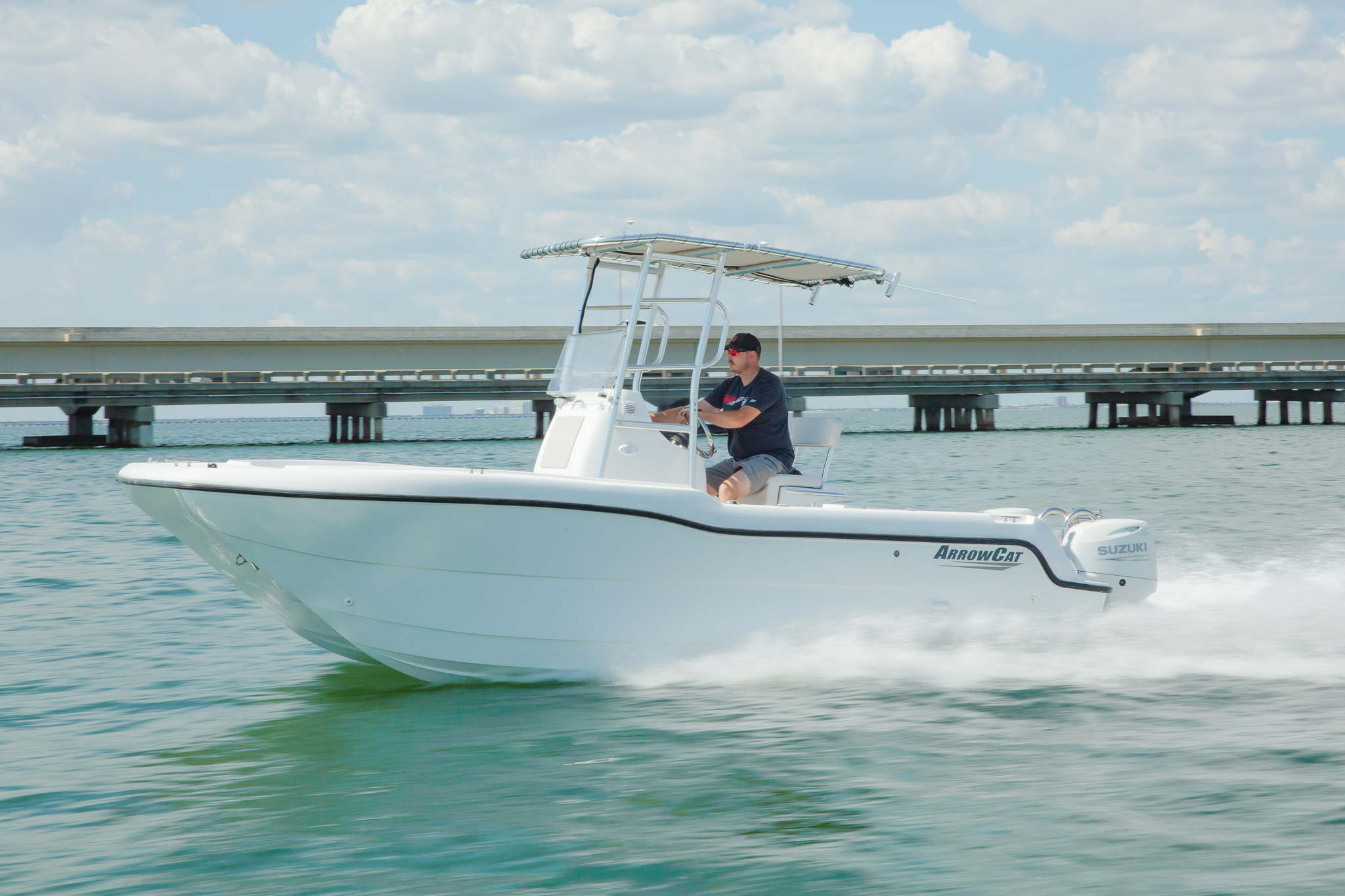
Explore Our 32' and 42' Signature Cabin Models
Perfect for inshore and offshore cruising, long distance and overnight trips, cold off seasons and hot boating seasons, and much more. The ArrowCat 32-foot and 42-foot models provide an exciting and versatile experience on the water. Explore to see which one could best suit your boating lifestyle.

ArrowCat 320
Merging express cruiser elegance with catamaran stability, the ArrowCat 320 Coupe features a planing hull design for smooth, swift rides. Powered by twin outboard motors, it promises dynamic performance and exhilarating adventures on every voyage.
Standard Layout: 2 Cabins/ 1 Wet Head Optional Tower Option LOA: 31′ 2″ / 9.5 meters Beam: 10’ / 3.05 meters Draft: 20″ / 0.508 meters
ArrowCat 420 Coupe
The ArrowCat 420 Coupe combines the luxury of an express cruiser yacht with the stability of a catamaran hull. Designed with a planing hull for agile, efficient navigation and powered by twin outboard motors, it delivers unmatched performance for your ocean adventures.
Standard Layout: 2 Cabins/ 1 Full Head LOA: 41′ 9″ / 12.73 meters Beam: 14′ 9″ / 4.50 meters Draft: 18″ / 0.46 meters

ArrowCat 420 Flybridge
This luxury express cruiser yacht boasts a catamaran hull for superior stability and a planing hull design that ensures efficient, agile handling. Powered by twin outboard motors, it offers robust performance. The addition of a flybridge enhances your view and enjoyment, making every journey unforgettable.
Standard Layout: 2 Cabins/ 1 Full Head LOA: 41′ 9″ / 12.73 meters Beam: 14′ 9″ / 4.50 meters Draft: 20″ / 0.51 meters
Our Unique Design
Enjoy your boat year-round and stay warm and dry during cooler weather or overnight trips, while also having a comfortable and private space to retreat for whenever you need a break. Here are a few reasons why an ArrowCat power cat is an excellent boat to consider.
Catamarans have two hulls, which provide more stability in the water. They are less likely to roll or pitch, which means they offer a more comfortable ride, especially in rough conditions and for people who are prone to seasickness.
Power catamarans are typically more fuel-efficient than monohull boats of the same size. It requires less energy and yields more performance per HP. The two hulls create little to no drag or resistance to get on plane, resulting in greater fuel economy. Allowing for longer journeys with fewer refueling stops.
Power catamarans have a shallow draft which means they can navigate diverse cruising grounds – beaches, islands, rivers, channels, and coastal areas with limited water depth.
Express Cruiser
Cabin boats are designed with comfortable sleeping quarters and living spaces. They feature a sleeping space with a bed, a galley with a stove, sink, and refrigerator, and a head with a shower and toilet.
Cabin boats provide protection from the elements, such as wind, sun, and rain. This allows for comfortable cruising in a variety of weather conditions, as well as providing a haven during storms
Express cruisers are designed for efficient and fast navigation, offering higher speeds compared to traditional cruising boats. They usually have powerful engines that enable them to cover long distances quickly, making them ideal for day trips or weekend getaways.
Powered By Outboard Motors
Outboard motors can provide excellent performance and speed. They can often reach higher speeds than inboard motors of the same horsepower.
Outboard motors have a simple and standard design and are relatively easy to install, they do not require additional components such as a transmission, propeller shaft, couplings, and struts, that inboard engines do. They are easily assessable and cost less to maintain than inboard motors because they are mounted outside at the rear of the boat.
Outboard motors are often designed with features that make them easy to maneuver. For example, they can be tilted or rotated to provide precise control and handling in tight spaces and shallower waters.
About ArrowCat
Crafting Versatility and Adventure on the Water Since 2008
At ArrowCat, we believe in creating boats that are ready for anything. Our American-owned company builds versatile, multi-functional catamarans designed not just for a specific activity, but for a lifestyle that demands freedom and reliability. Whether you’re cruising, fishing, or exploring, our boats deliver superior performance in all conditions.
Trusted by seasoned mariners across coastal and saltwater environments, ArrowCat power catamarans embody the spirit of adventure and the promise of quality.
Learn More About Us
Experience A Smooth, Fast, And Stable Ride
Discover the unparalleled stability and speed of an ArrowCat power catamaran. Connect with our experts to schedule your sea trial today and experience the thrill firsthand.
Privacy Policy
- THE PRINCESS PASSPORT
- Email Newsletter
- Yacht Walkthroughs
- Destinations
- Electronics
- Boating Safety
- Ultimate Boat Giveaway

The Power Catamaran Compilation
- By Yachting Staff
- Updated: December 21, 2018
Power Catamarans have been growing leaps and bounds in popularity, and, in lengths and widths. And for good reason. These cruise-centric yachts offer homelike livability for avid travelers, are fuel efficient and are fairly intuitive to run. Power cats are popular in the bareboat charter market too, for these very reasons.
Here, we take a look at 12 catamarans ranging from a cruising-couple-size 36-footer to a 78-footer for friends, family and some more friends. And there are myriad power options: outboards, diesel inboards, hybrid or even all-solar power.
Fountaine Pajot MY44
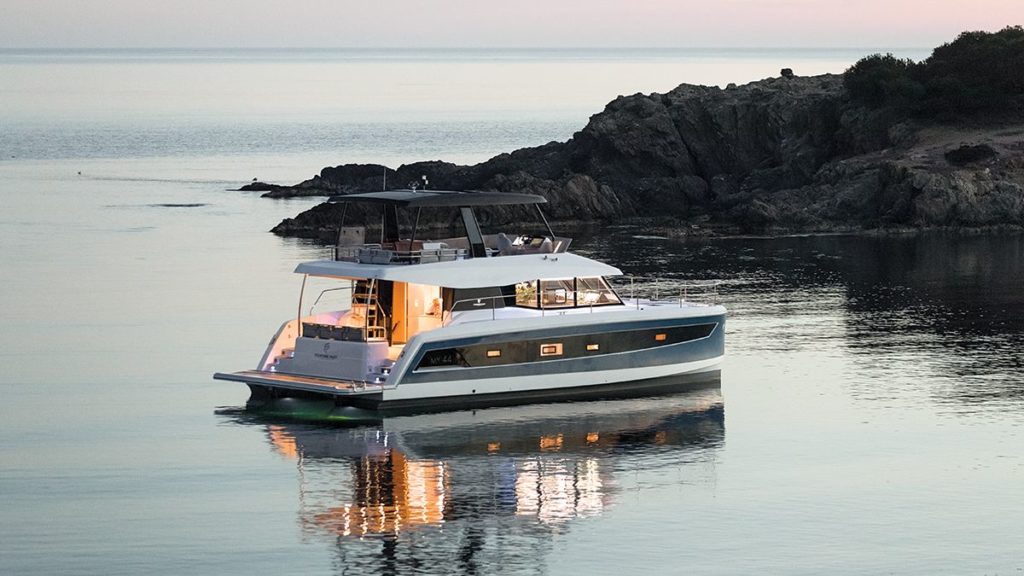
The Fountaine Pajot MY44 , a creation of Italian architect Pierangelo Andreani and French designer Daniel Andrieu, has a main deck that’s open from the aft-deck seating all the way forward to the starboard helm station. The sense of spaciousness is significant, for several reasons. First, four glass panels aft can all slide to port, creating an indoor-outdoor space with the aft deck and salon. In the salon, 32-inch-high windows extend for 12 feet down the sides of the yacht, with three sections per side, bringing in natural light along with the three forward panes that comprise the windshield. Finally, 6-foot-6-inch headroom provides vertical clearance, with a 21-foot-7-inch beam that adds interior roominess while keeping the yacht stable.
Read more: Fountaine Pajot MY44
Silent-Yachts 55
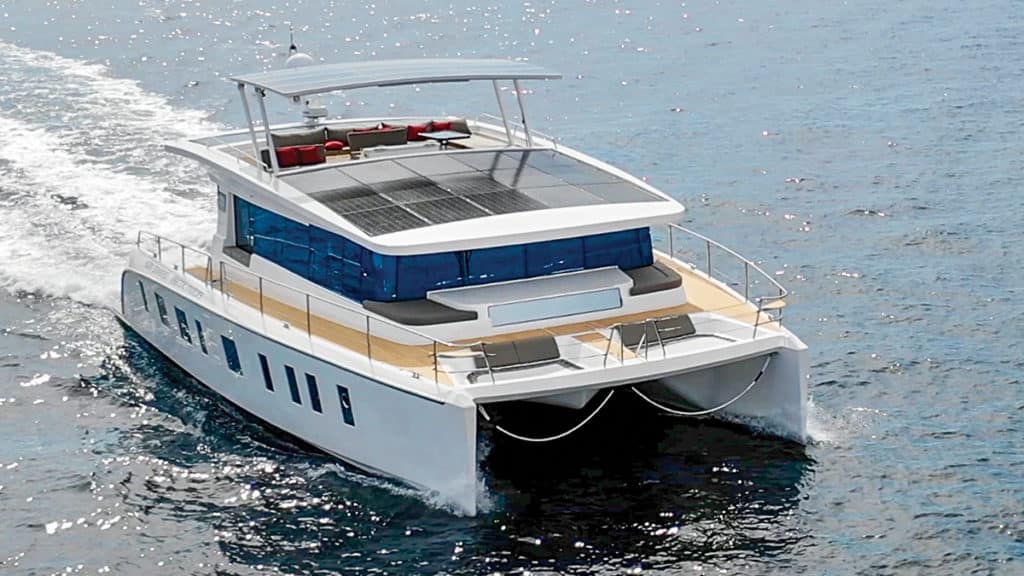
The ideas about which solar panels, electric motors, inverters and the like to use — and more importantly, Michael Köhler says, how to configure them — became the basis for the brand Silent-Yachts. The company offers 55-, 64- and 79-foot catamarans that run on solar-electric propulsion. The Silent 55 premiered this fall, and the 64 is sold out for the next two years, Köhler says.
Read more: Silent 55
Horizon PC74
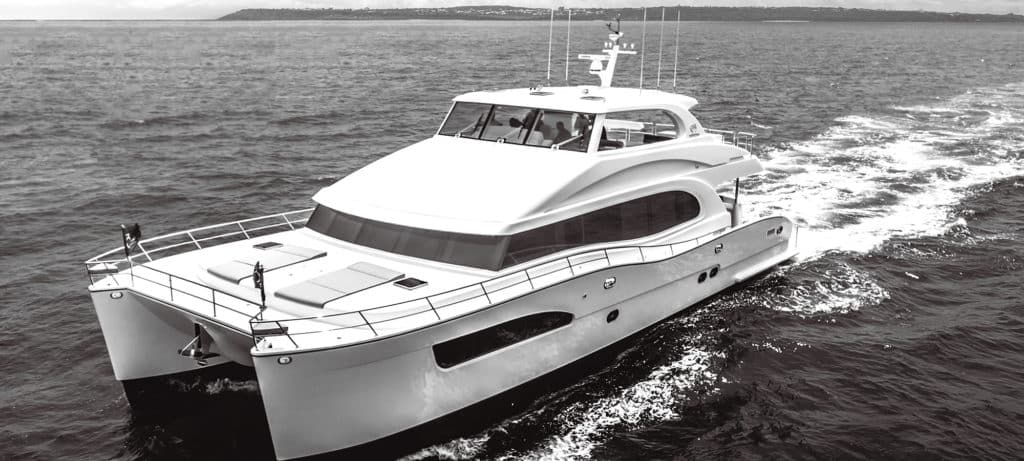
As founder and director of The Powercat Company, a Horizon Power Catamarans distributor, Stuart Hegerstrom had long believed that catamaran builders needed to design their yachts to more stylish standards.
“The boats were very boxy,” he says, based on his years of experience with cats in the charter market. He and his partner, Richard Ford, asked Horizon to produce models that had high-end finishes and looked good inside and out.
The Horizon team brought in mega-yacht designer JC Espinosa to work with its own craftsmen. The result aboard the Horizon PC74 is a catamaran with exterior styling, layout and functionality that should appeal to private and charter owners alike.
Read more: Horizon PC74
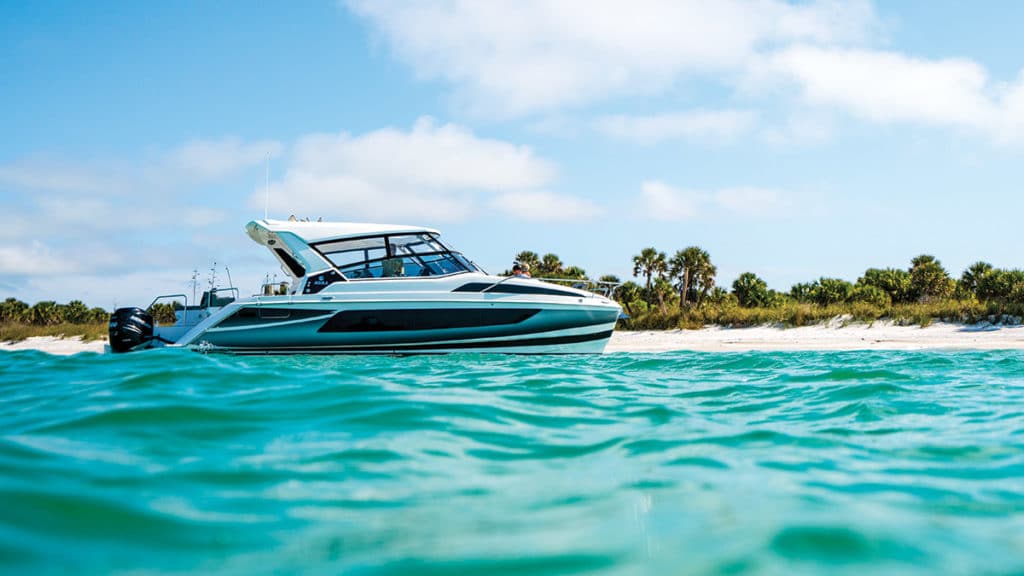
The Aquila 36 is a departure from her sisterships in that she is an outboard-powered, express-cruiser-style catamaran, but she also adheres to MarineMax’s philosophies.
With a single main living level from bow to stern and a beam of 14 feet 7 inches, the Aquila 36 is like a bowrider on steroids. She has seating that can handle 20 adults for outings and barbecues, and there are two staterooms below, one in each hull, for family weekending. The staterooms have nearly queen-size berths, en suite heads, stowage and 6-foot-6-inch headroom.
Read more: Aquila 36
Lagoon Seventy 8 Powercat
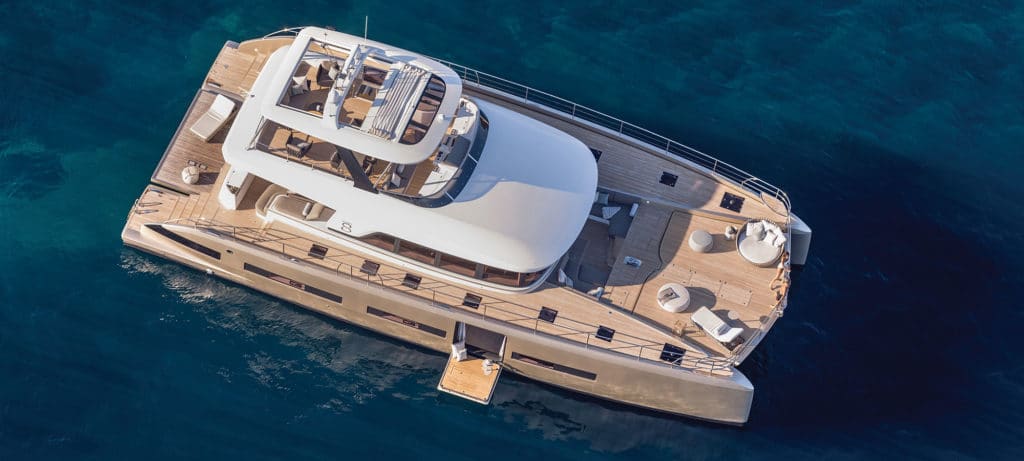
Lagoon is a division of Groupe Beneteau, the world’s largest builder of sailing yachts, and the Lagoon Seventy 8 Powercat is a developmental sistership of its Seventy 7 super sailing cat. The Seventy series yachts are built at Construction Navale Bordeaux in France, which had to add a new yard to construct these catamarans because they require separate stern molds for the power and sail versions.
Read more: Lagoon Seventy 8 Powercat
Horizon PC60
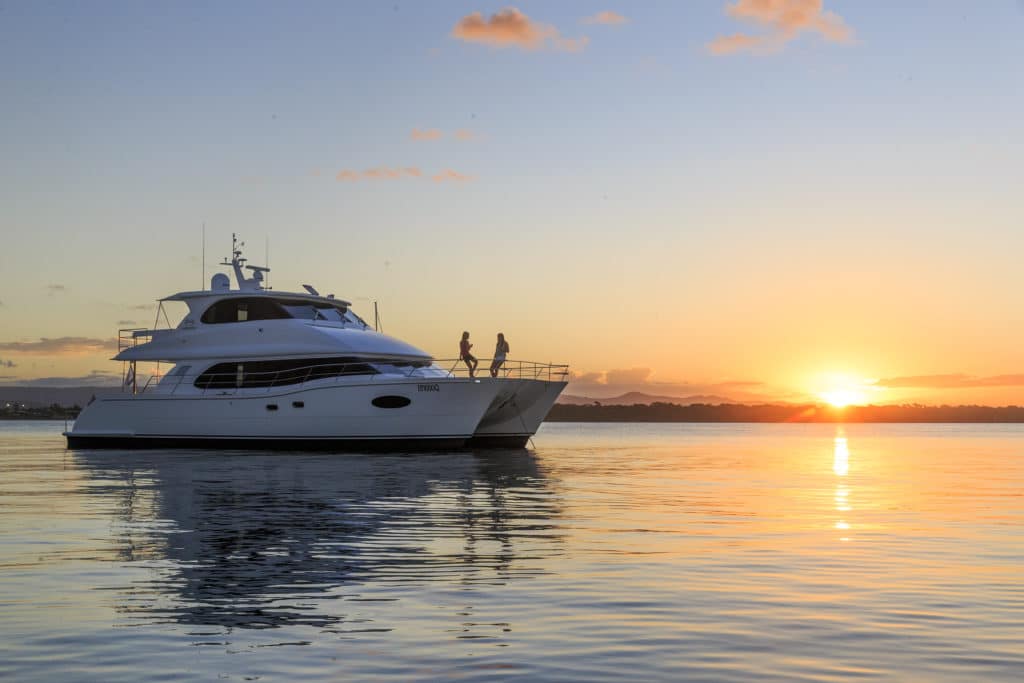
To understand the Horizon PC60 power catamaran , you need to put aside preconceived notions about midsize yacht amenities. For example, main-deck master suites are the province of yachts over 100 feet length overall. Incorrect. This 60-footer has an elegant and spacious owner’s stateroom on the same level as the salon. If you want a 14-foot center console tender on a 60-foot yacht, you have to tow it. Wrong again. On the PC60, you hoist it onto the upper deck, no problem.
Read more: Horizon PC60
40 Open Sunreef Power
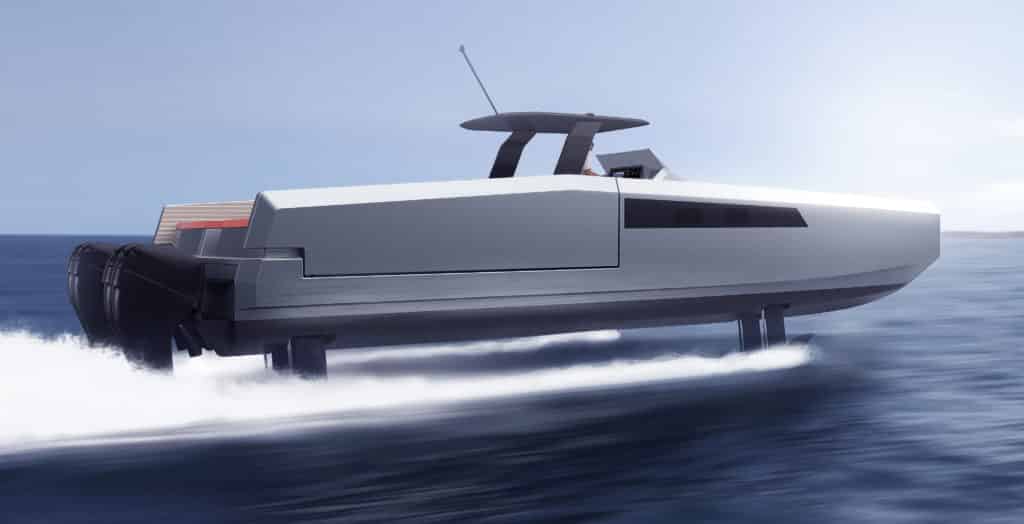
Sunreef is known for pushing the boundaries of catamaran design, incorporating four adjustable hydrofoils into a twin-hulled speedboat.
The Polish builder is one of several European builders (including Evo, Fjord, Wider and Wally) transforming the open day-boat category with creative designs. Beyond its hydrofoils, the 40 Open Sunreef Power ‘s cockpit has side “wings” along the aft gunwales that fold out at anchor, widening the beam from 17 feet to 22 feet 9 inches.
Read more: 40 Open Sunreef Power
Sunreef 50 Amber Limited Edition
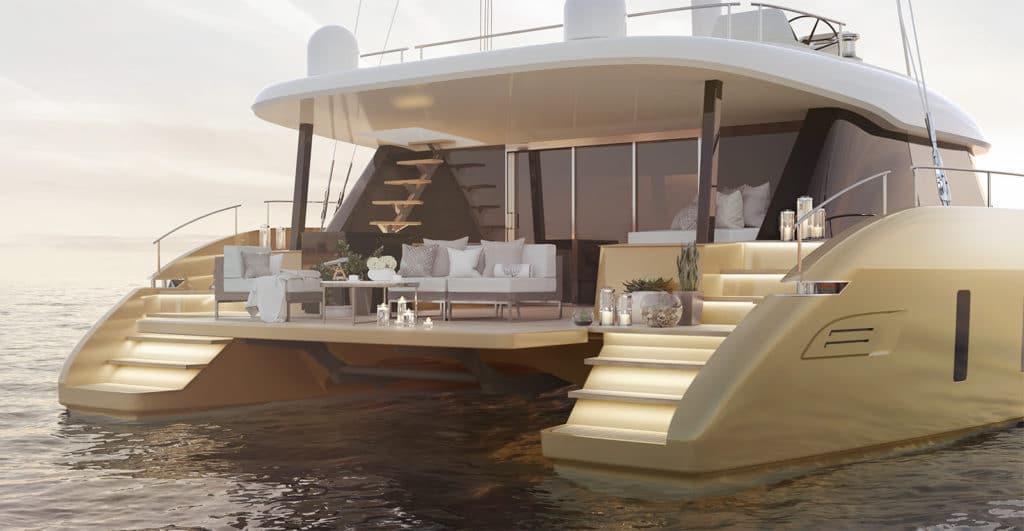
Sunreef Yachts introduced its 50 Amber Limited Edition , with plans to launch just 10 hulls of the exclusive design.
The Sunreef 50 Amber Limited Edition will have a carbon fiber mast and boom, four layout options and numerous amber-colored elements, including the hull.
Read more: Sunreef 50 Amber Limited Edition
Lagoon 630 Motor Yacht
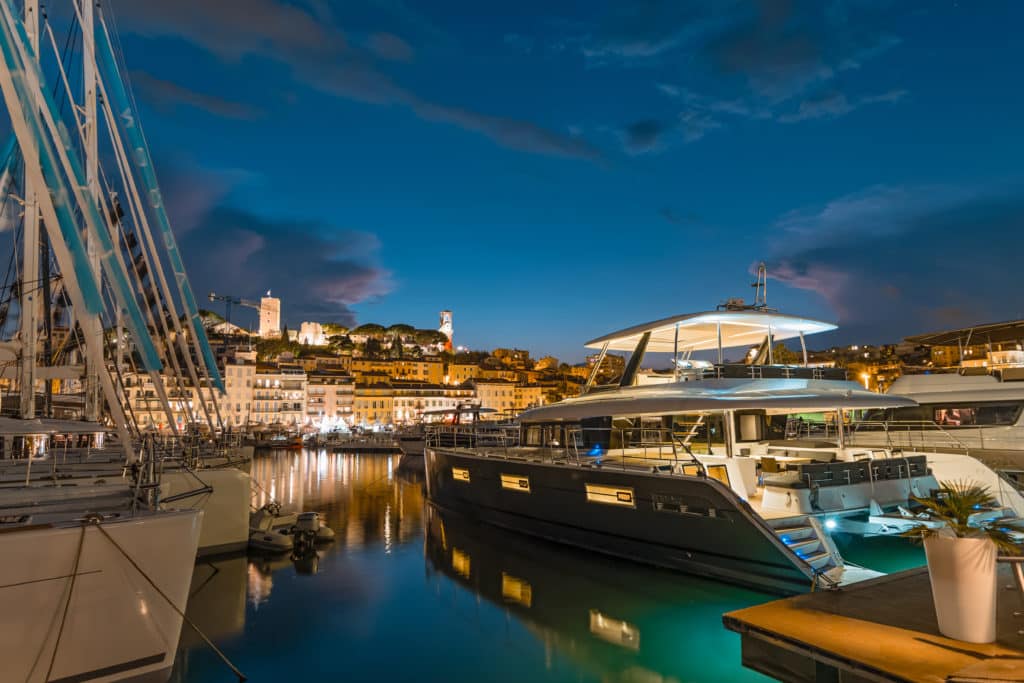
Fitted with the optional twin 300-horsepower Volvo Penta D4 diesels, the Lagoon 630 MY burns only 1.64 gph total at 6 knots, giving a theoretical range of 2,952 nautical miles with standard tankage of 793 gallons. Hull No. 1 had an optional 502-gallon tank, giving it transatlantic range.
Luxury, stability and economy are all hallmarks of Lagoon’s return to luxury motor yachts. If you can take a ride, it will be worth your time.
Read more: Lagoon 630 Motor Yacht
Fountaine Pajot MY 37
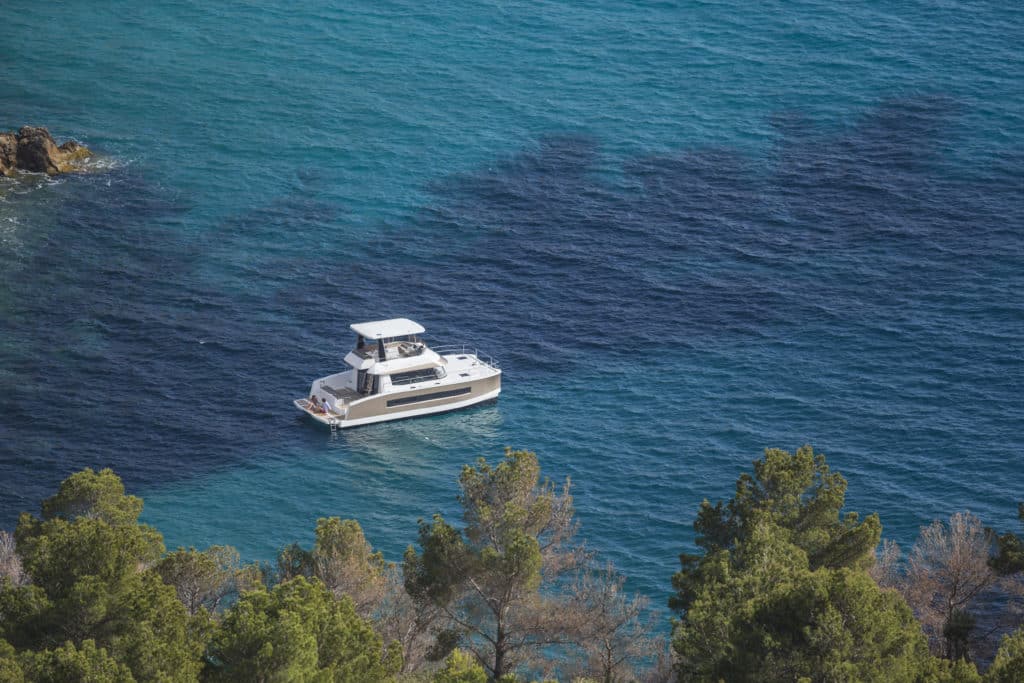
The Fountaine Pajot MY 37 easily accommodates the seafaring family with three- and four-stateroom options. In the three-cabin version, called Maestro, you’ll find an owner’s suite in the portside hull with a queen-size berth and en suite head. Two double-berth cabins and one more head are available for the kids. If your brood is bigger, the Quator setup features four double cabins with two heads.
The 37 is a traveler and can be powered with twin 150 hp or 220 hp Volvo Penta diesels. Top speed with the smaller engines is 17 knots, while it’s 20 knots with the bigger power plants. Interestingly, at 7 knots, the fuel consumption is the same, with either set of motors offering voyagers a 1 ,000-nm range.
Read more: Fountaine Pajot MY 37
Solarwave 64
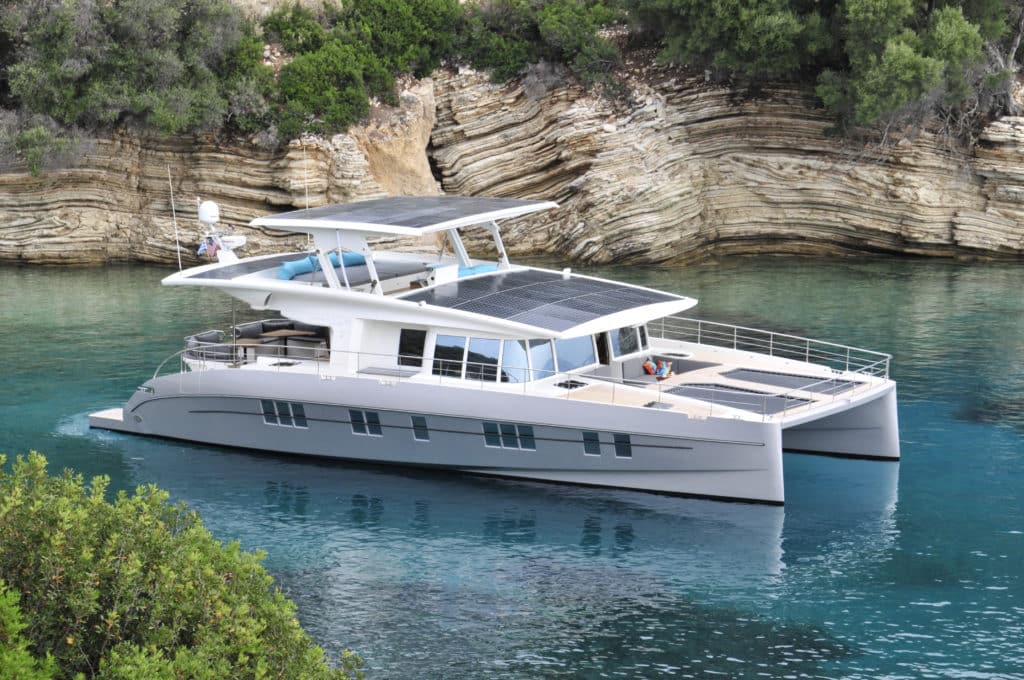
Many yachts boast eco chops because they have a handful of solar panels that power the microwave or navigation lights. The Solarwave 64 , launched last summer, has the potential to run on sunshine alone. The vessel’s 42 solar panels generate 15 kW that are stored in batteries weighing about 1,300 pounds. They connect to electric motors.
Read more: Solarwave 64
Glider SS18
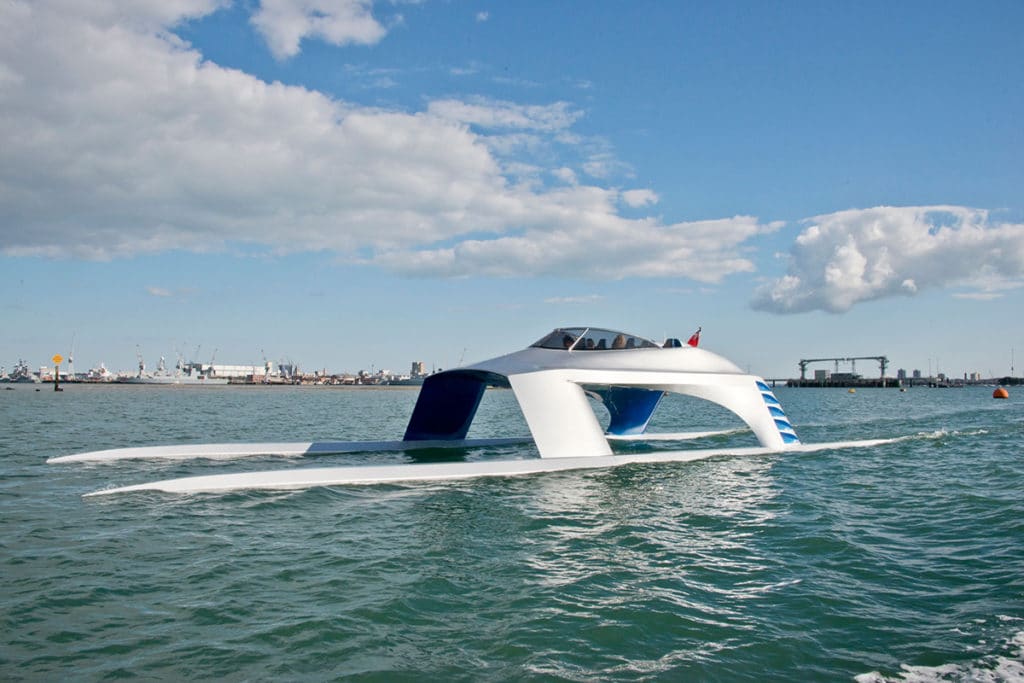
This British builder says it strives for design innovation and the Glider SS18 displays that DNA, the result of 8 years of research and development. She has a head-turning, catamaran hull form constructed from aluminum and composite materials. She is 60 feet LOA with a 17-foot beam, and has a relatively shallow 1-foot draft. Powered by quad Yamaha 300 hp outboards, she can reportedly reach 50 knots, and with her Stability Control System (SCS), should give a smooth ride while doing it.
Read more: Glider SS18
- More: aquila , Aquila Boats , Express and Flybridge Cruisers , Fountain Pajot , Glider Yachts , Horizon Power Catamarans , Lagoon , Power Catamarans , Silent-Yachts , Sunreef , Yachts
- More Yachts
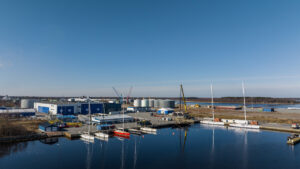
Luxury Yacht Giants Unite: Nautor Swan and Sanlorenzo Group Merger
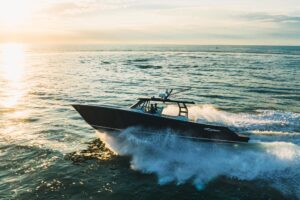
Halo 470 Reviewed
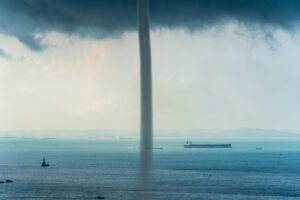
Superyacht Collision, Sinking Incident, Takeaways and Lessons
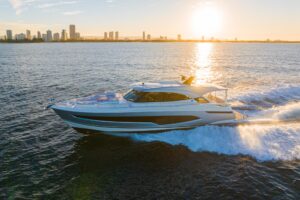
Riviera to Unveil 6800 Sport Yacht at Fort Lauderdale International Boat Show
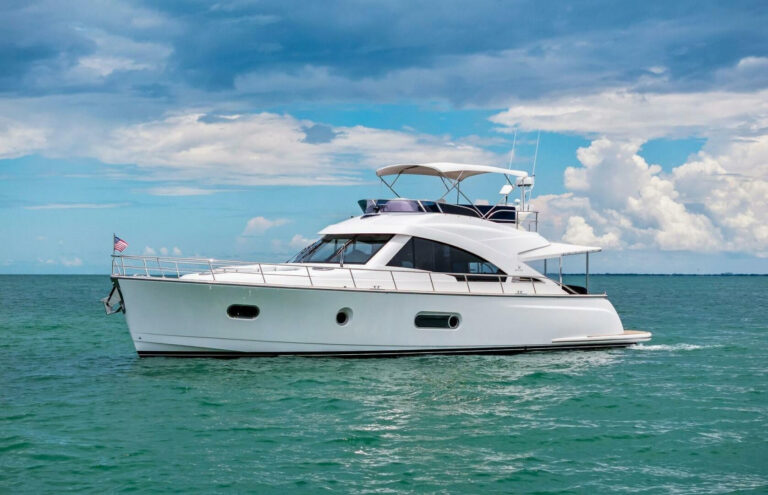
For Sale: Riviera Belize 54 Daybridge
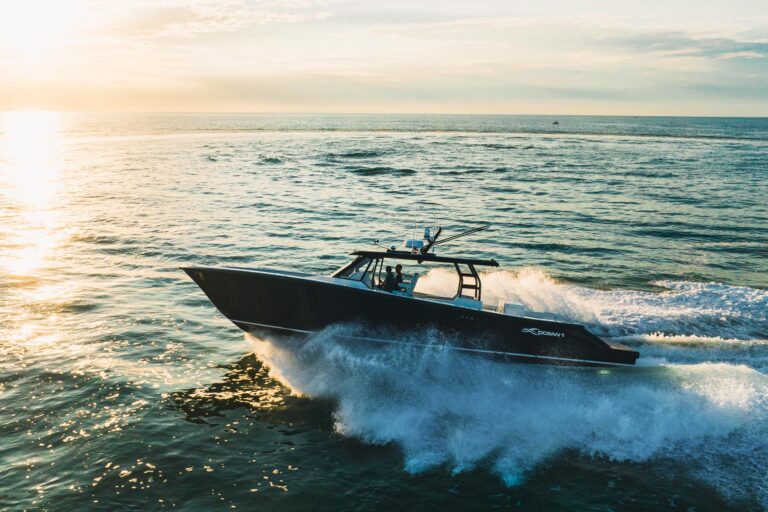
KVH Expands Its Hybrid Network with OneWeb’s LEO Satellites

- Digital Edition
- Customer Service
- Privacy Policy
- Terms of Use
- Email Newsletters
- Cruising World
- Sailing World
- Salt Water Sportsman
- Sport Fishing
- Wakeboarding

Length Beam Range
16.37m | 53.70 ft 7.63m | 25 ft 2,500+ nm
SETTING THE BENCHMARK FOR FUEL EFFICIENCY, QUALITY, VOLUME AND SPACE.
Winner of the prestigious 2024 Multihull of the Year award (MultiPower category), the exceptional ILIAD 53F sets a new standard in power catamarans.
The elegant motor yacht features one of the highest bridgedeck clearances in her market segment, with a high freeboard to deliver comfortable cruising in challenging offshore conditions.
The ILIAD 53F features outstanding interior living space, including a generous forward lounge, internal helm station and dining for 6-8 people. Panoramic windows deliver beautiful natural light and superb views from every angle.
Equipped with the finest European appliances, the galley is designed for stylish entertaining, and her expansive benches, full-sized refrigerator and freezer, and remarkable storage make her ideal for extended cruising adventures.
Accommodation onboard is spacious and beautifully designed with the master suite encompassing an entire hull and featuring an oversized island queen bed, panoramic windows, generous headroom and large ensuite.
The motor yacht boasts exceptional outdoor space for entertaining and relaxing, and the cockpit features a bar area and dining setting for up to ten guests. The flybridge sets a new reference in use of space, features and comfort. The tender platform is ideal for safe sea access when swimming or diving and makes a superb sunbathing spot when the tender is deployed.
The ILIAD 53F is powered by 440hp Volvo or Yanmar engines delivering a top speed of 21 knots (lightship), and cruising long range at low speeds will afford more than 2,500 nautical miles. Upgraded Cummins 550hp engines are also available as an option.
SPECIFICATIONS
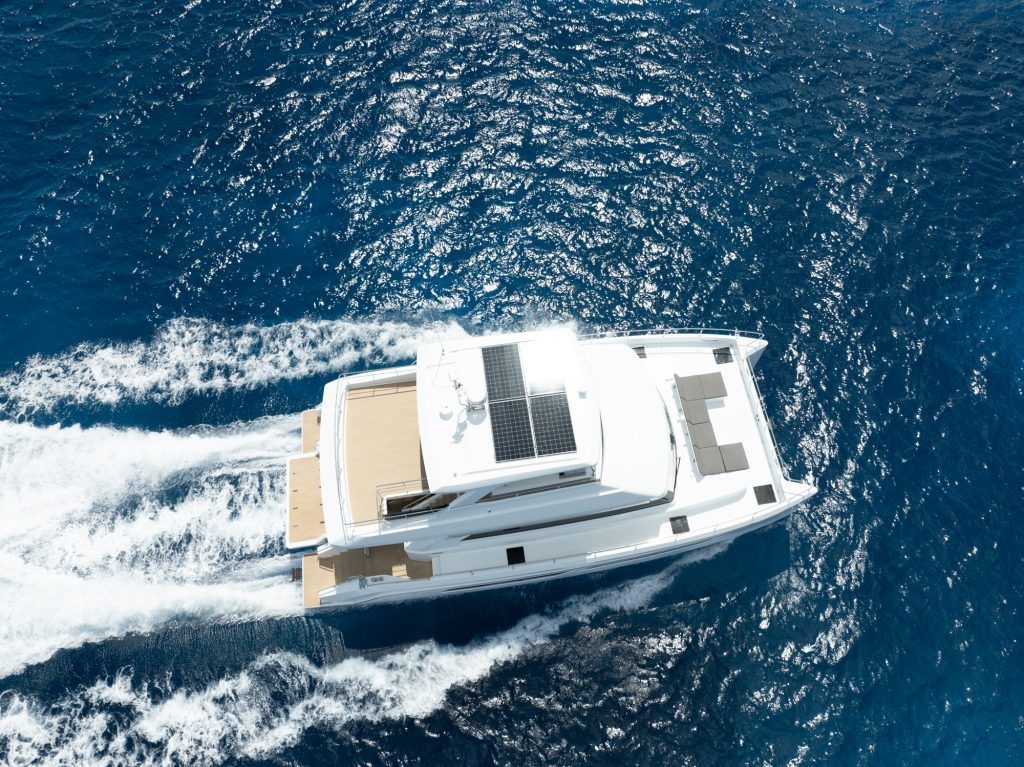
request detailed specificationS
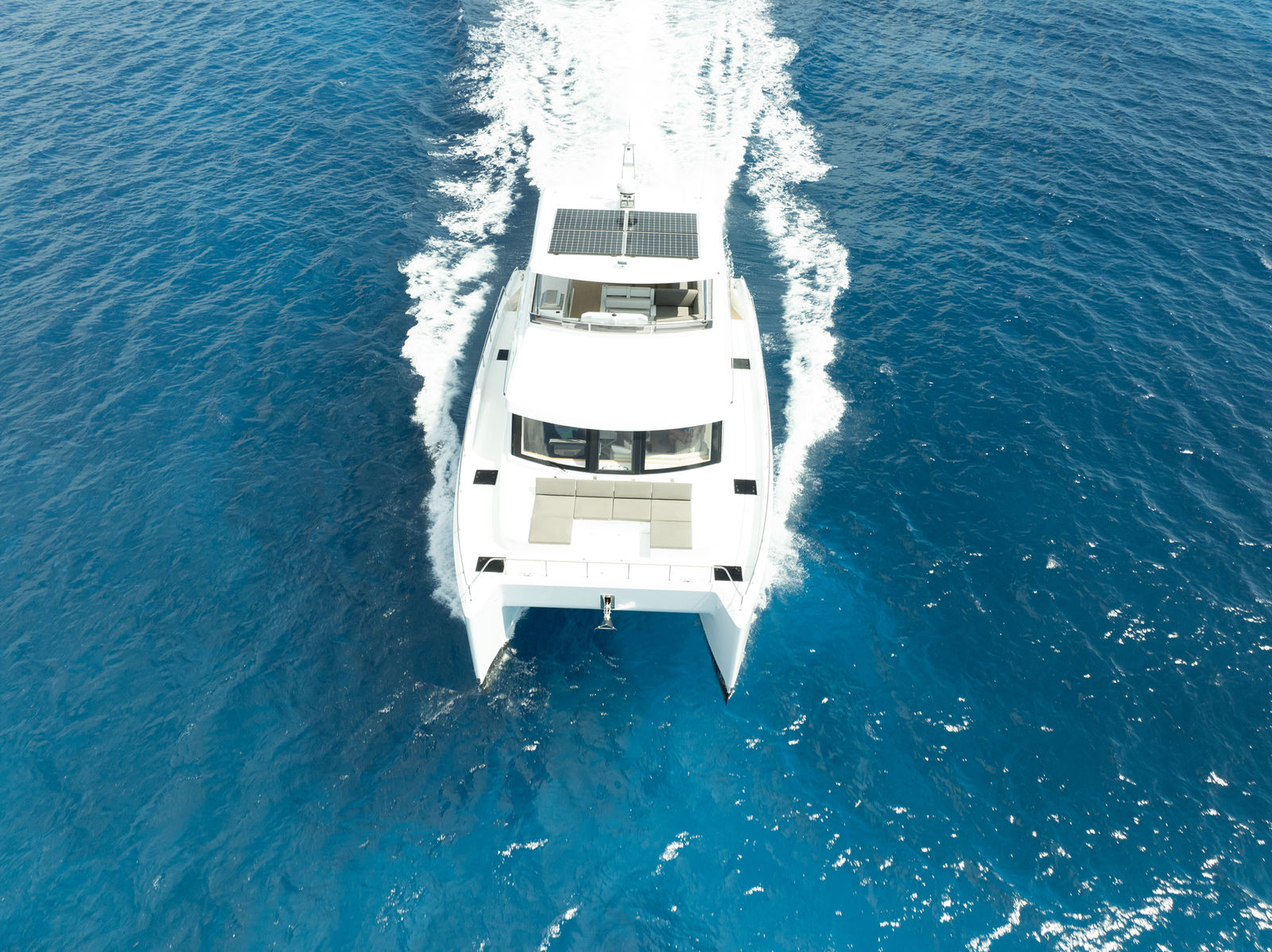
BRIDGEDECK HEIGHT
Outstanding bridgedeck tunnel clearance for reduced water across the deck and more comfortable cruising in challenging offshore conditions.
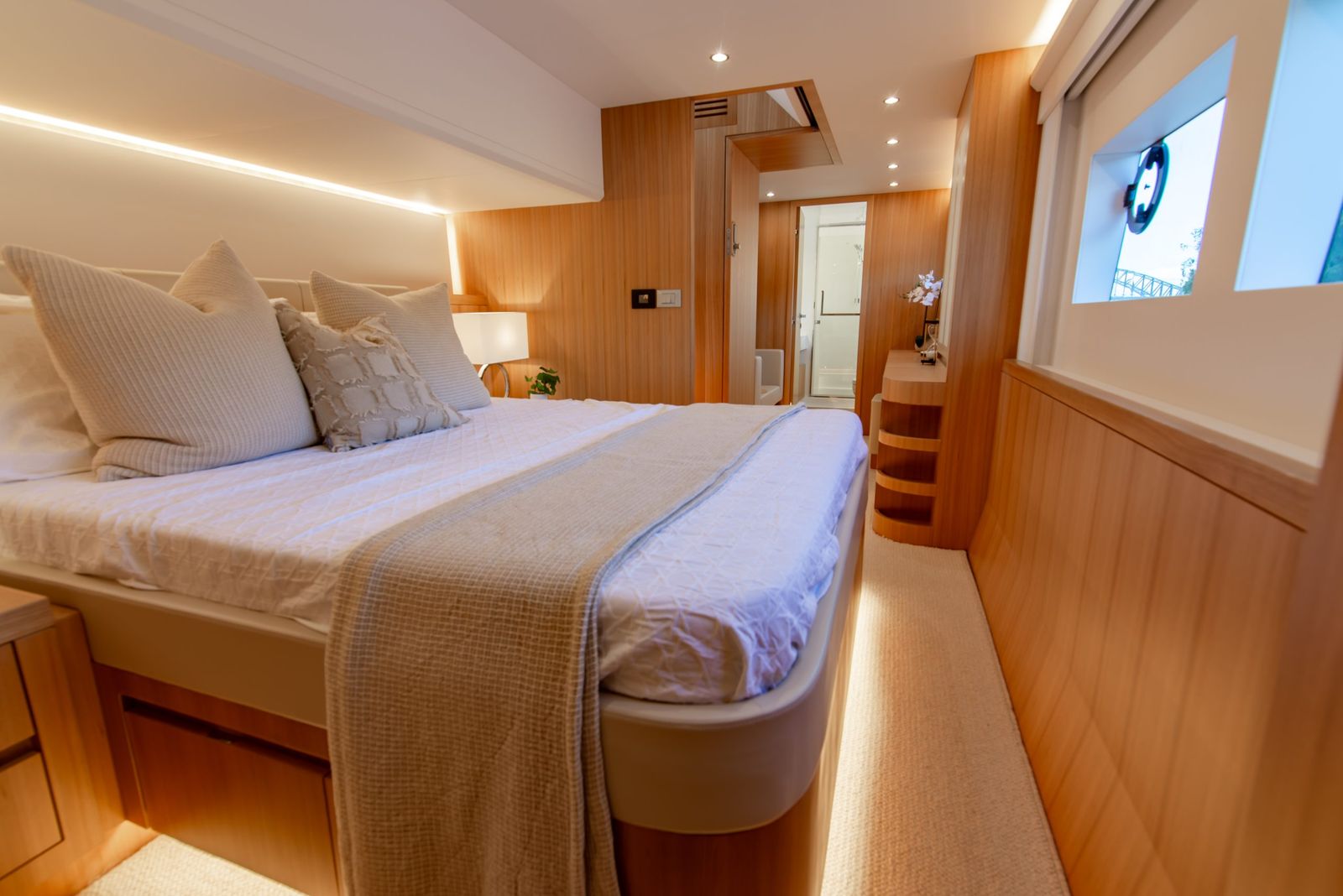
Expansive owner’s suite
Experience premium space and luxury in the spacious owner’s suite with generous headroom, ample storage and a decadent ensuite.

ENTERTAINER’S FLYBRIDGE
Superb alfresco area with a lounge and convertible teak table to seat 10, refrigerator, wet bar and optional BBQ and ice maker.
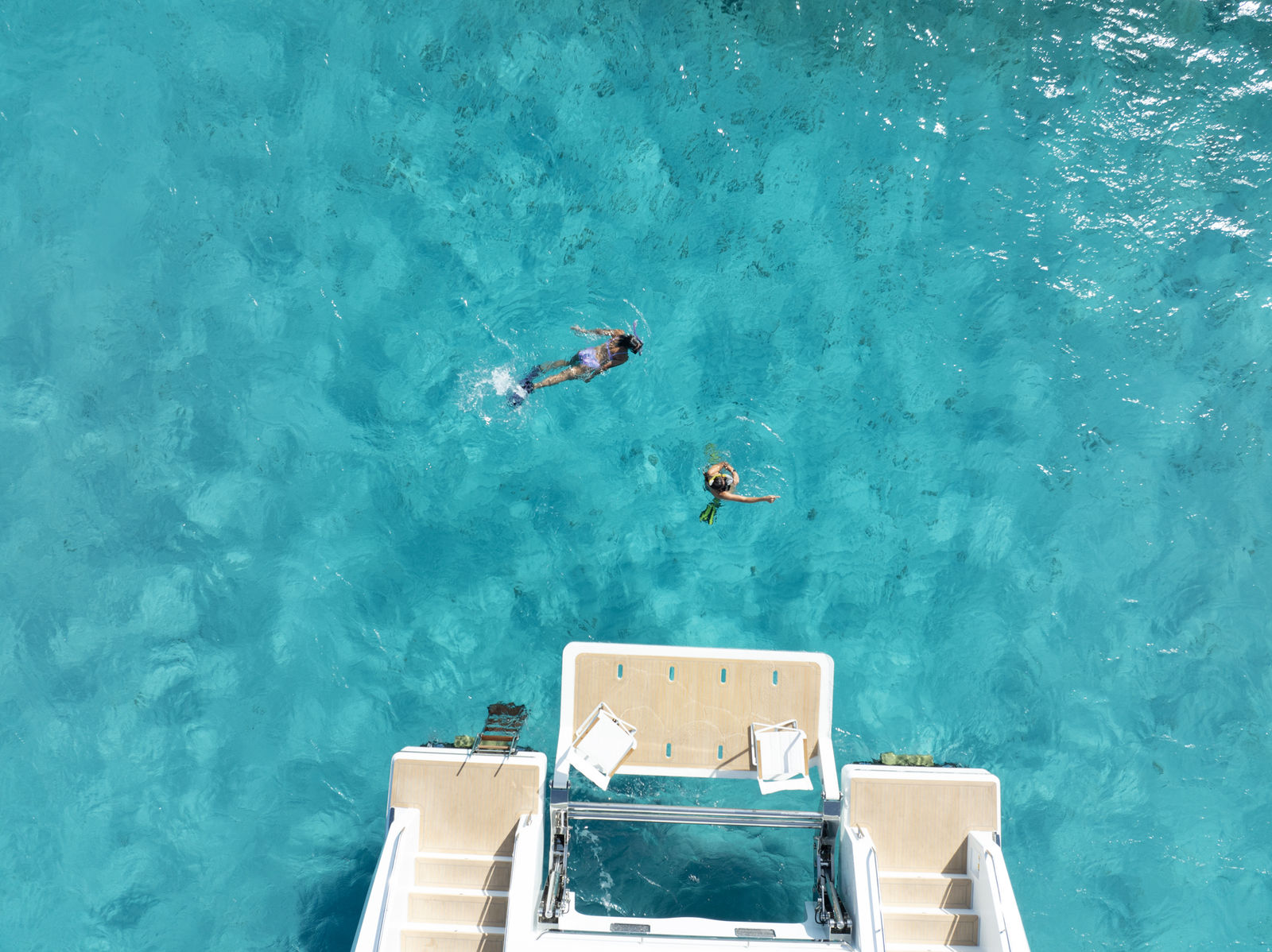
aft platform options
Choose an optional retractable hydraulic platform allowing you to stow large tenders or watercraft and enjoy relaxing beach club sea access.

Walk-through
Explore further with the.
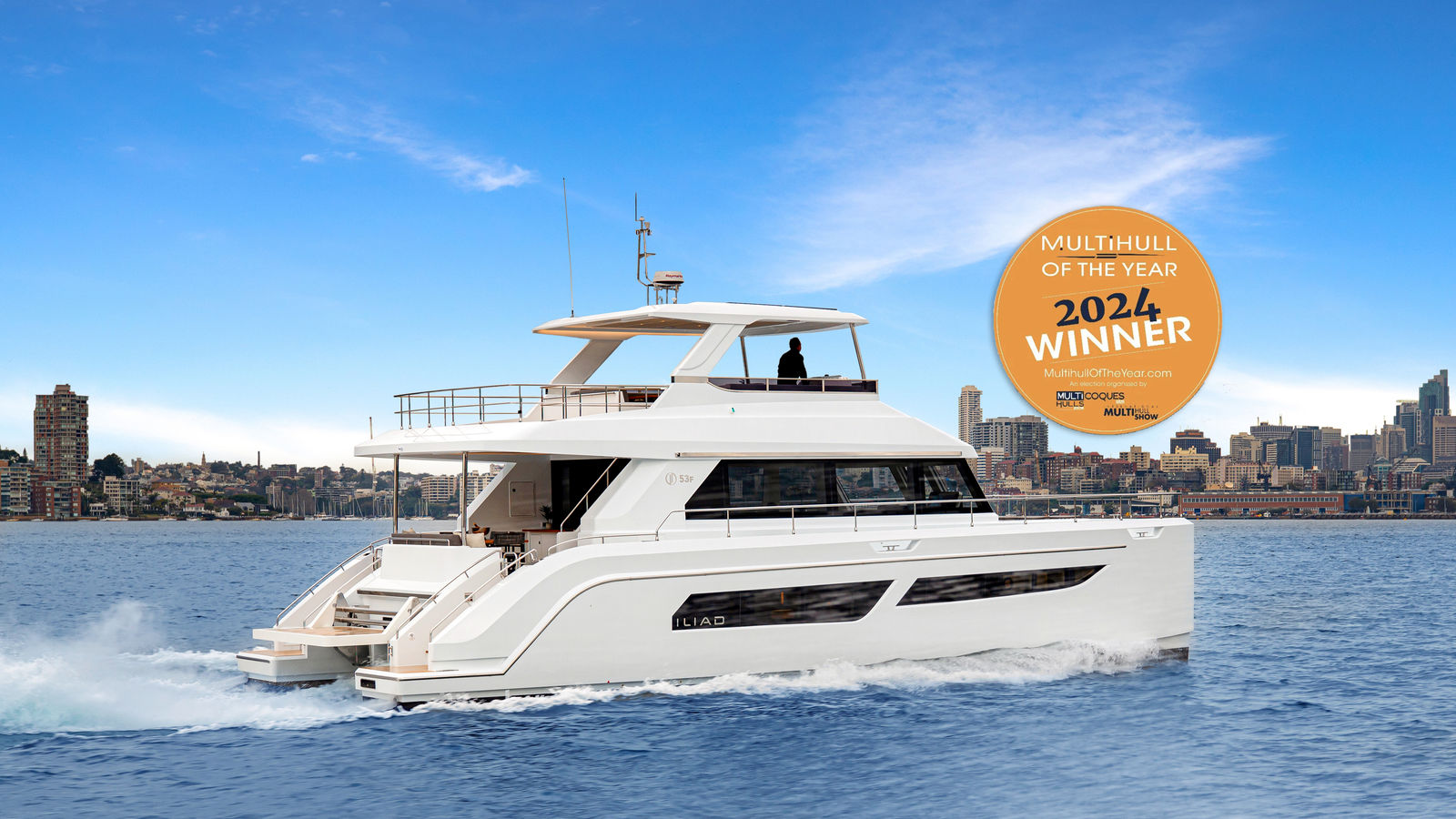
The ILIAD 53F has officially been voted 2024 Multihull of the Year at the opening of the International Multihull Show in France.

Inspect the ILIAD 53F at the 2024 Fort Lauderdale International Boat Show from October 30 to November 3.

Read the review of the ILIAD 53F in the November 2023 edition of Yacht Style magazine.
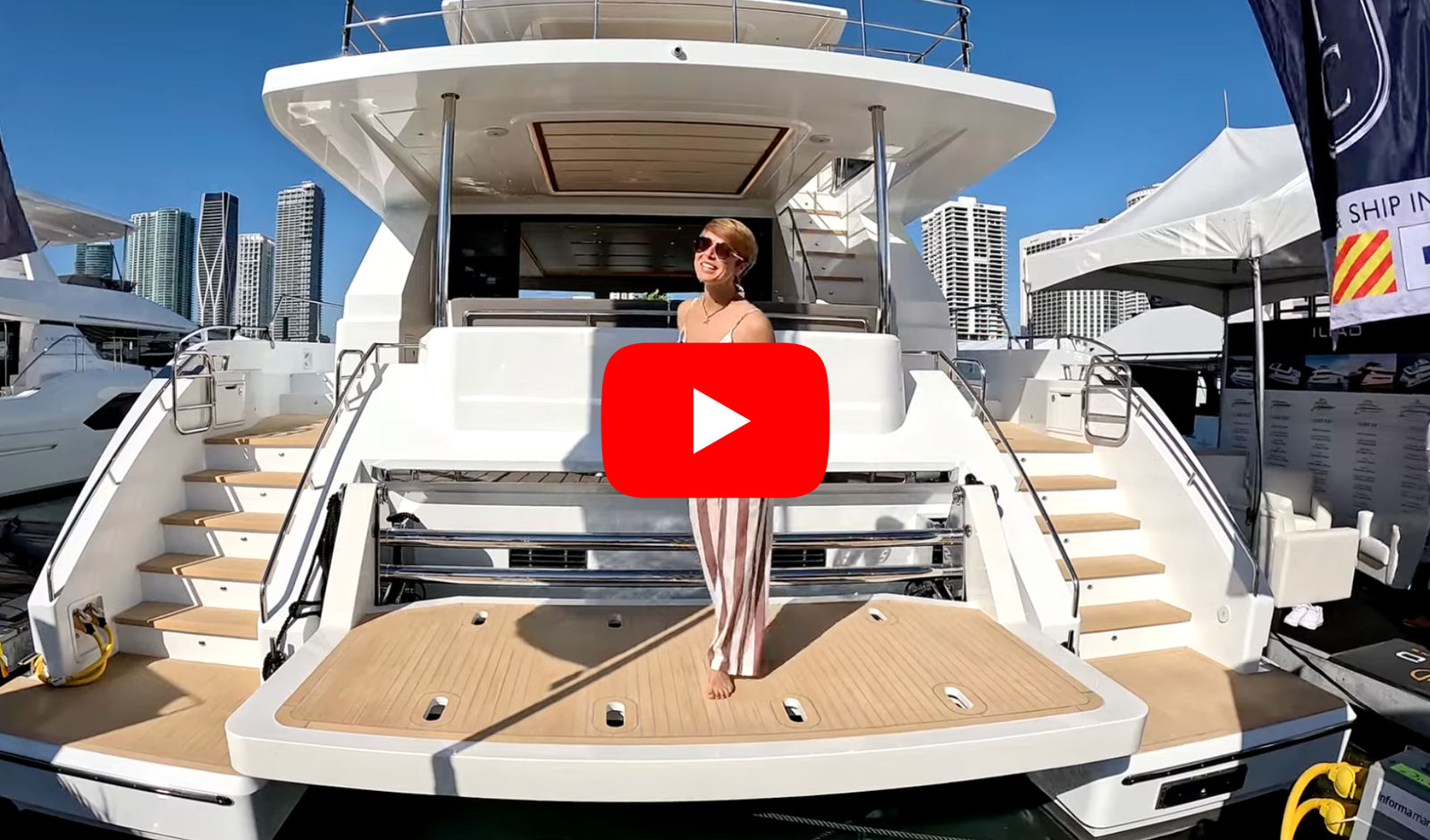
Tour the ILIAD 53F with Victoria and Rico of Nautistyles at the 2024 Miami International Boat Show.
enquire about the
Other models.
- 2024 BOAT BUYERS GUIDE
- Email Newsletters
- Boat of the Year
- 2024 Freshwater Boat and Gear Buyers Guide
- 2024 Boat Buyers Guide
- 2024 Water Sports Boat Buyers Guide
- 2024 Pontoon Boat Buyers Guide
- Cruising Boats
- Pontoon Boats
- Fishing Boats
- Personal Watercraft
- Water Sports
- Boat Walkthroughs
- What To Look For
- Watersports Favorites Spring 2022
- Boating Lab
- Boating Safety
- Ultimate Boat Giveaway

Five of the Top Power Catamarans
- By Boating Tech Team
- July 24, 2024
Somehow, the anglers knew. When power catamarans first started working their way into the mainstream a few decades ago, offshore fishermen were among the first adopters. They didn’t mind the different look because they knew what they were gaining in the stability and seakeeping that a twin-hull boat could provide. Soon the long-distance cruisers took to them too, as the secret got out that they could take to waters in smaller boats normally reserved for the biggest and burliest of V-hulls. Now? Cats are part of the big-boat circuit as well, with 35- to 50-footers seen roaming the canyons and cruising hotspots. If you like to roam outside the inlet, here are five of the biggest cats that get the job done.
- Invincible 46 Pilothouse
- Four Winns TH36
- World Cat 400 CC-X
Aquila 47 Molokai
- Twin Vee 400 GFX2
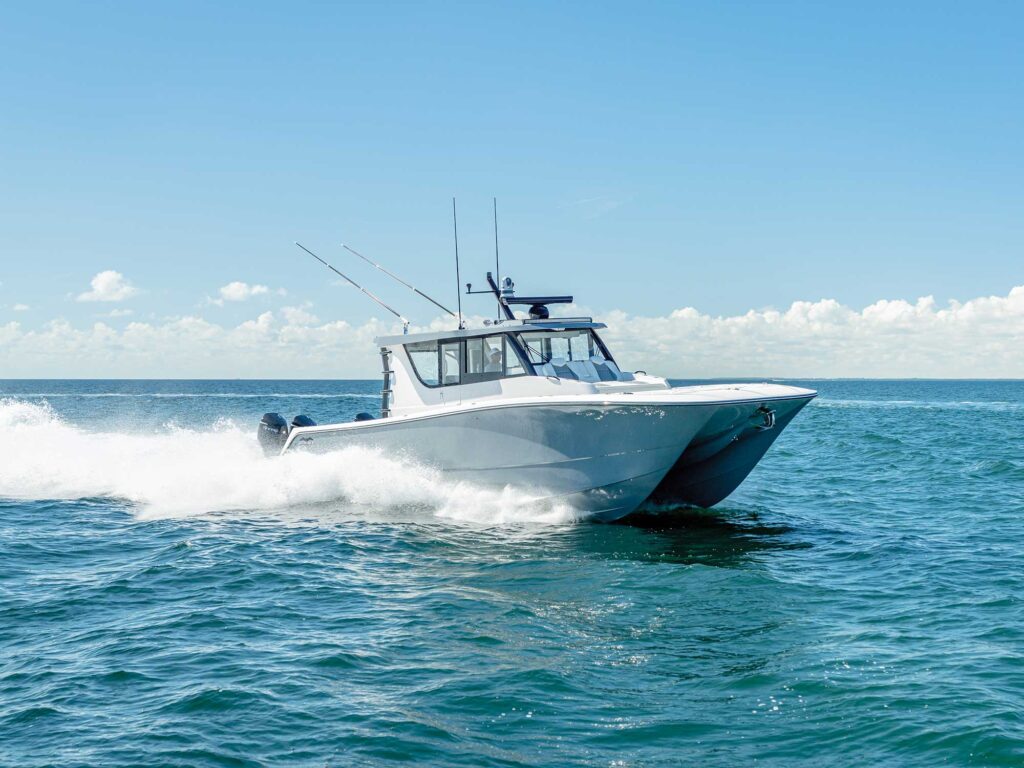
Invincible 46 Pilothouse
The Pilothouse version of the Invincible 46 allows you to overnight in style and comfort, or enjoy weather protection en route to the fish, and the 1,000-gallon fuel capacity gives the boat incredible range. When we tested this boat with quad Mercury Racing 450s, we recorded a range of 593.9 miles while cruising at 40.7 mph at 4,000 rpm. Top speed, if you’re wondering, was 71.2 mph. But this angling platform is about so much more than just the performance numbers.
The Invincible 46 rides on a hybrid-asymmetrical hull that combines the best of a proa cat’s efficiency with the wave slicing and stability of identical twin sponsons. The hulls are double-stepped to further improve efficiency and running attitude. This cat can handle heavy seas and provide comfort offshore on days when less-worthy boats are still in their slips.
The pilothouse allows the captain and crew to experience the ride in plush comfort. In addition to the helm seating and the aft U-shaped lounge, there is an aft row of captain’s chairs. However, you can delete the second-row seating and extend the lounge for a roomier feel. If you want some fresh air, the pilothouse opens up nicely with port and starboard sliding doors, helm and passenger sliding windows, and a power-sliding window on the aft bulkhead that opens the cockpit to the cabin. Belowdecks, there’s sleeping accommodations for four, plus a galley that can be custom-fitted to your needs.
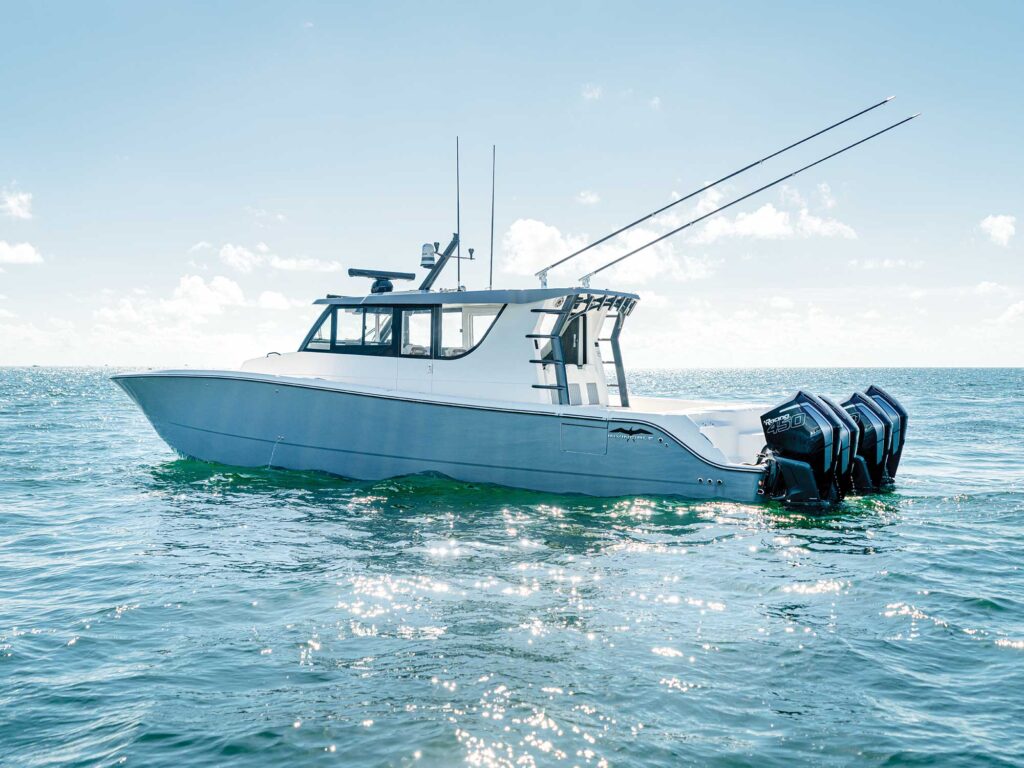
Even with the pilothouse, Invincible bills this boat as having 360-degree fishability. There’s plenty of fish-fighting space in the cockpit and the bow, which can convert to a three-person sun pad when the lines are in. Bring all the bait you want with the dual 60-gallon transom livewells, along with the 70-gallon in-floor well. All are fed by a sea chest with six pumps to keep the bait fresh. A rigging station folds out of the mezzanine seatback so cleverly that we might have missed it in our initial inspection if it hadn’t been pointed out. Drawers and tackle-box slots keep gear, tools, and leader spools organized. Six shotgun rod holders on the transom will prove ideal for storage and rigging. There’s lockable rod storage under the gunwales too. The transom arrangement eschews a transom door, but Invincible has an inward-opening portside door for hauling fish to the deck.
Overall, the Invincible 46 Pilothouse is set up to be a badass long-distance fishing and cruising machine.
| Unavailable | |
| 45’11” | |
| 12’0″ | |
| 2’0″ | |
| 27,000 lb. | |
| 1,000 gal. | |
| 1,800 |
Invincible Boats – Opa-Locka, Florida; 305-685-2704 ; invincibleboats.com
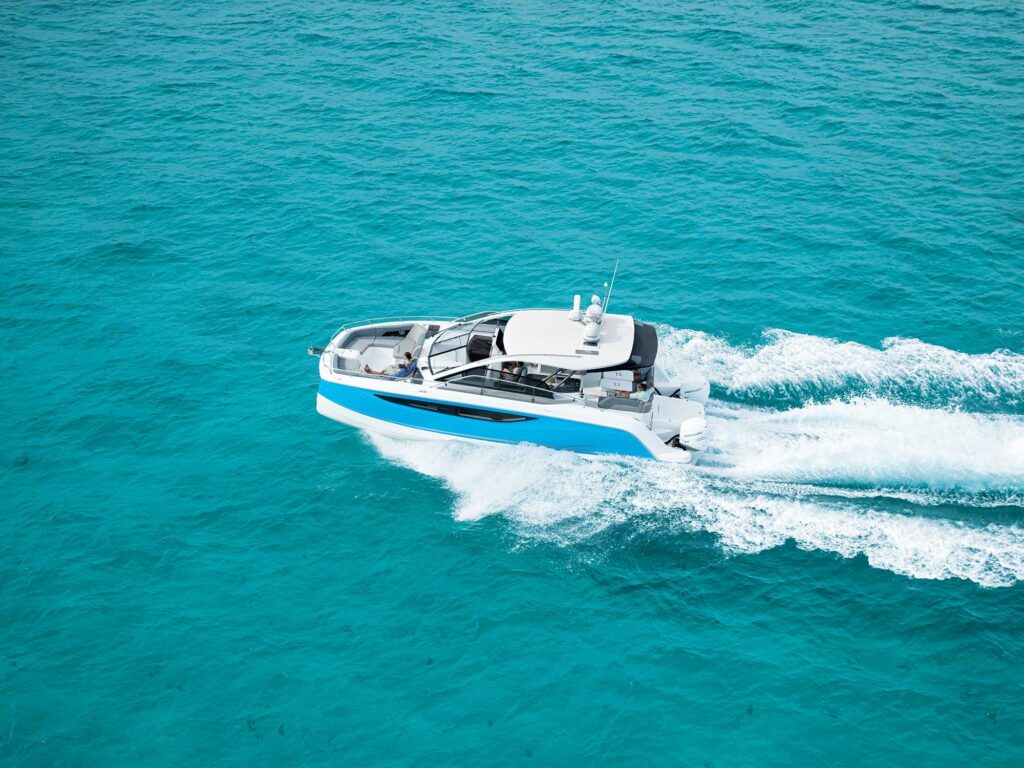
Four Winns TH36
With an aggressively wide 14-foot-7-inch beam, the Four Winns TH36 packs a ton of creature comforts into this catamaran to exceed the needs of the typical dayboater. Start with the aft living room—er—cockpit, which rivals the setup of many backyard patios. The seating is genius; the cockpit lounges slide and lock in several positions, both with and without tables. Slide them outboard, and two L-lounges reside on each side of a central walkway. Slide them inboard, and you create a giant U-shaped lounge. At the cockpit’s forward end, large plush, upholstered double chaises face aft. It’s all one level from here, right up to the bow lounge. Amidships, a pair of counters to port and starboard house the galley. Lift the faux-stone lids to reveal a cooktop, sink and optional grill, with a fridge hiding underneath. The massive bow lounge provides even more social space for up to eight people.
The dual-console layout evokes the feel of a bowrider on steroids. The helm provides excellent visibility from the adjustable captain’s chair, from where the captain can observe twin MFDs mounted in a pod that extends from the top of the console without restricting the view beyond. We tested this boat with a pair of Mercury 350 Verados, achieving a top speed of 37.1 mph and a nice cruising speed of around 25 mph. With the twin hulls, we found the boat to be as smooth as silk while knifing through swells that might cause a similar-size V-hull to pound.
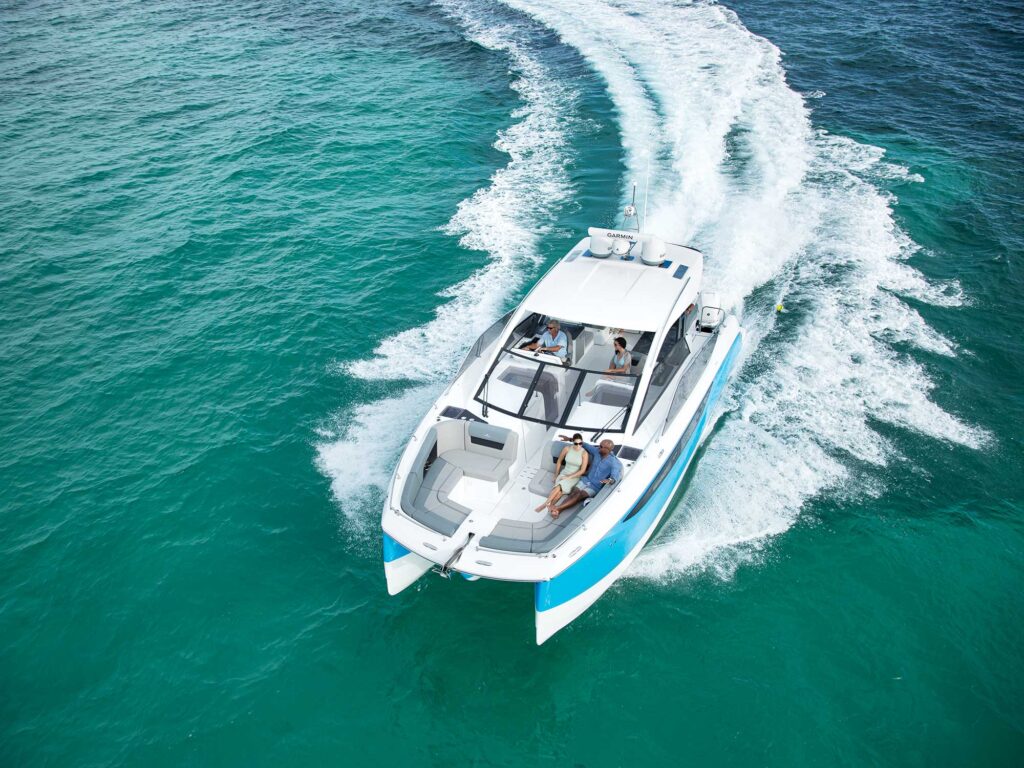
While designed primarily for daytime roaming, the TH36 is set up to also be an overnight cruiser. Two cabins with queen berths reside belowdecks, each with its own separate head and shower. So you and your guests, or a family of four, can enjoy some privacy when it’s time to draw the curtains.
The extended platform between the outboards proved to be a favorite feature. It’s a great spot for taking a dip at anchor when the engines are off, but it also makes for a great boarding spot, showing that the TH36’s comfort factor starts before you even leave the dock.
| $730,000 | |
| 38’5″ | |
| 14’7″ | |
| 3’2″ | |
| 15,995 lb. | |
| 244 gal. | |
| 700 |
Four Winns – Cadillac, Michigan; fourwinns.com
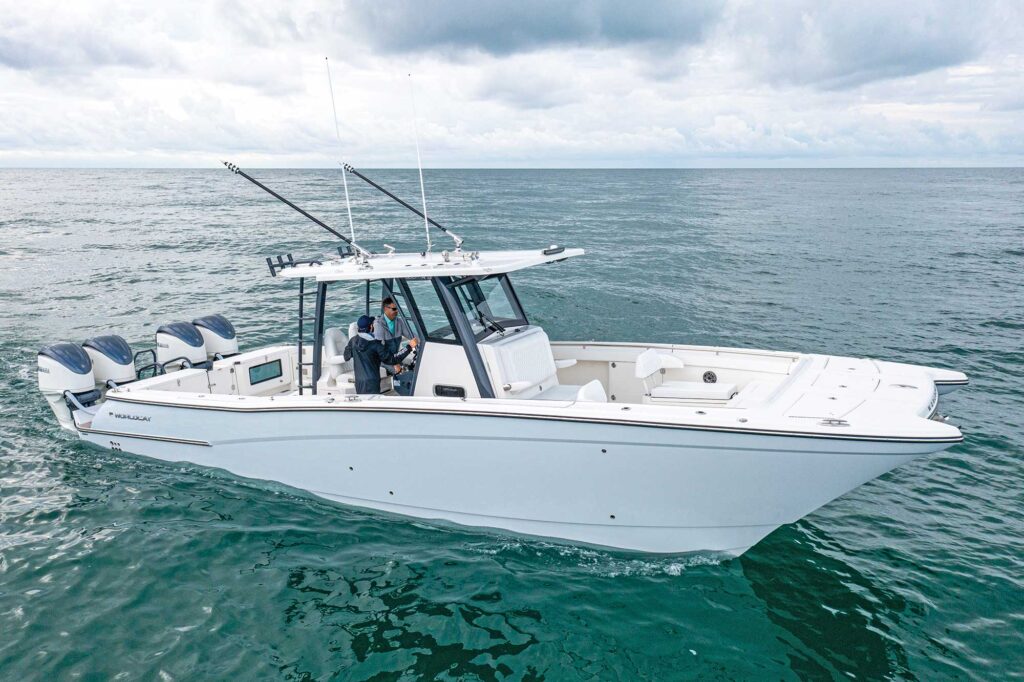

World Cat 400 CC-X
An OG in the power-cat space, World Cat has been producing center- and dual-console fishing catamarans for decades. Coming out on the heels of its 40-foot dual-console, the 400 CC-X is the flagship of its center-console fleet.
With a 604-gallon fuel tank, the 400 CC-X can deliver a range of over 600 miles, as proved during test day when, powered by quadruple Yamaha F300s, we recorded a range of 611.6 miles at a 27.5 mph clip at 4,000 rpm. You can get to the blue water and back, or the Bahamas if you live in Florida, and still have fuel to fish along the way.
Because of its long length and wide beam, the 400 CC-X can fit three high-back seats with armrests at the helm. The captain’s place would be at the center seat, which adjusts electrically behind the brushed-aluminum Edson wheel with brodie knob. The three-sided tempered-glass windshield provides wind and spray protection, while an electric opening vent at the top of the windscreen allows a breeze on hot days. Our test boat sported two 22-inch Garmin touchscreens—a trio of 17-inch displays is also offered—that showed everything, from systems (lighting, pumps, etc.) to the engine readouts. The 400 CC-X comes with a key-fob control, so you can turn on the lights and systems while walking on the dock. Some thoughtful touches at the helm include a padded recess atop the dash to securely hold phones and glasses, plus a handy glove box with a drain.
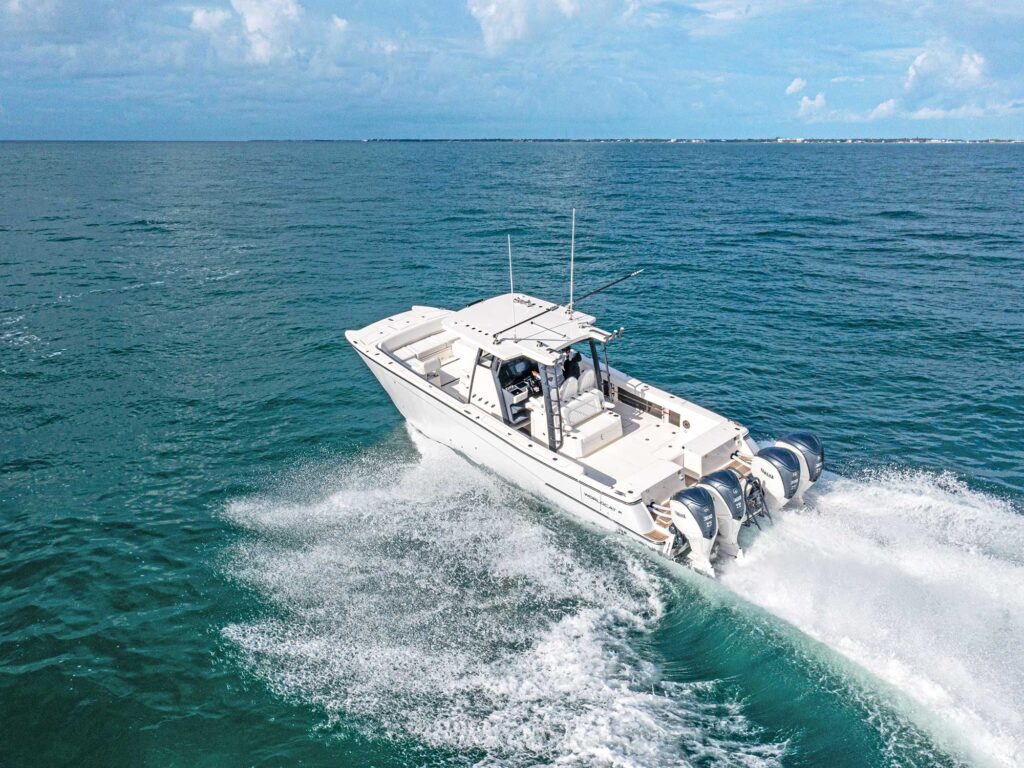
In terms of fishy features, the 400 CC-X is stacked, with an inward-opening tuna door leading into the 200-square-foot cockpit, with padded coamings and nearly 30 inches of walk-around space past the console and T-top to chase fish. In the cockpit sole are a pair of 80-gallon insulated fish boxes (with overboard Grouper Gulper pumps) that can be optioned as bait tanks; another pair of 154-gallon fish boxes (5-by-2 feet) are forward. Up at the bow, there’s actually a casting platform that hides the Lewmar anchor windlass. Our tester boasted the optional Cat Track sliding seats forward, which can combine into a centerline coffin box, creating a sun pad, or separate into a U-lounge. So there’s definitely room to relax and chill. Rod capacity? There are four vertical holders on each side of the console, three rod racks on each side of the cockpit aft, six lockable racks forward, an additional six locking racks under each gunwale, plus six rocket launchers on the T-top—five behind the helm and 11 scattered around the bow. Bring your entire arsenal.
| Unavailable | |
| 39’8″ | |
| 12’8″ | |
| 1’9″ | |
| 14,500 lb. | |
| 604 gal. | |
| 1,200 |
World Cat – Tarboro, North Carolina; worldcat.com
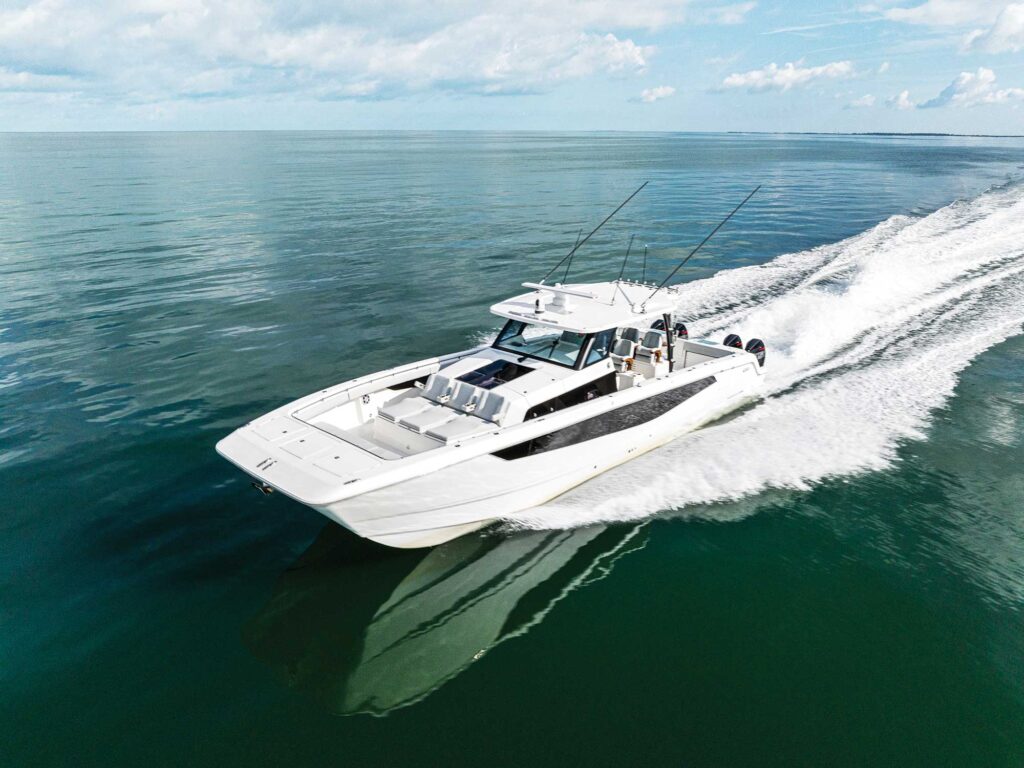
The largest of the cats in this roundup, the Aquila 47 Molokai can take on square-edged seas with aplomb. When we tested it with four Mercury 400 Verados on the transom, we pointed the bow through the inlet and took on some serious swells with nary a shudder. It can run far, fish hard, and cruise in comfort—all in one finely appointed package.
Aquila’s heritage stems from the cruising side, so we’ll start with all the amenities designed to keep you in comfort between marina runs. Tucked into the low-profile console is a fully outfitted air-conditioned cabin with a queen berth; 6 feet, 7 inches of headroom; big windows; overhead skylights; and a surprisingly spacious head with shower. The genset is powered by lithium batteries that provide eight hours of juice for cooling the cabin.
Abovedecks, the 47 Molokai is all fishing. There are 22 rod holders all around the gunwales, plus attached to the carbon-fiber hardtop and in piping along the hardtop stanchions. Twin 42.5-gallon livewells are built into the transom for your baits, and insulated 4-foot, 148-gallon macerating fish boxes hide under deck hatches along the console walkways.
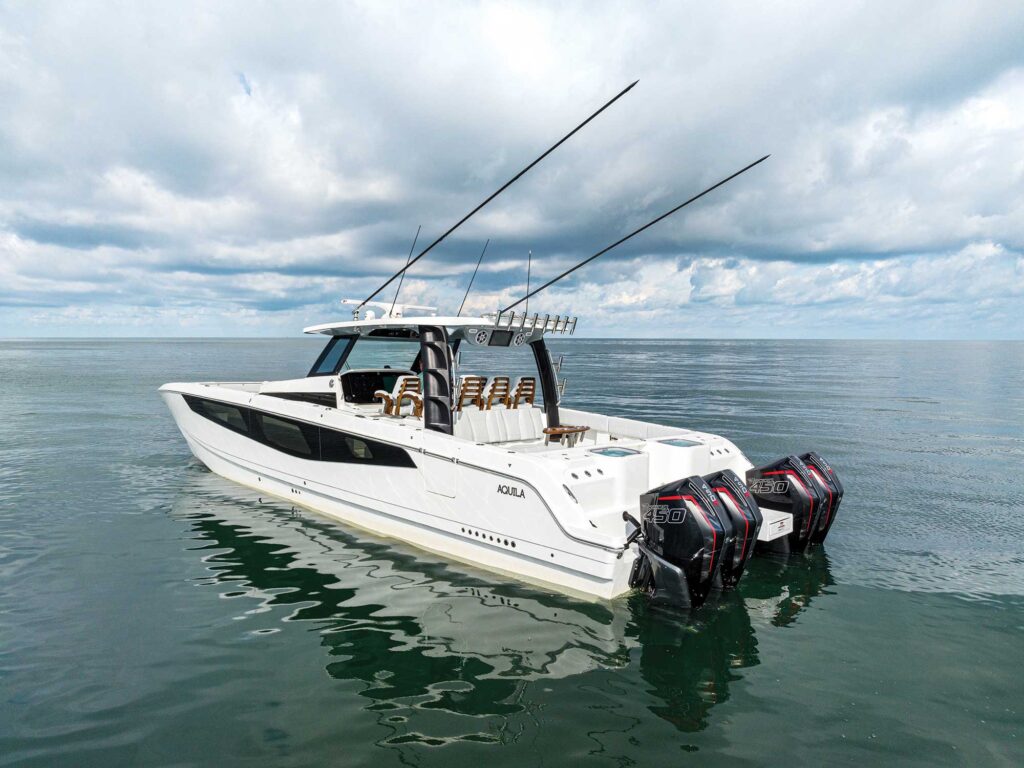
Tucked under the carbon-fiber hardtop (reinforced for the optional Pipewelders tower) are seven Stidd seats: three up front behind the helm and four in the raised mezzanine to spectate the action. That helm is impeccable, from the eyebrowed black dash with twin (or triple) Garmin MFDs, C-Zone switching, custom Fusion audio, and Mercury joystick. Driving the 47 Molokai when equipped with 1,600 hp is an absolute blast. The double-stepped hulls keep the boat at a good attitude while running along at a crisp pace. We recorded a top speed of 66.5 mph with the throttles pinned, while still maintaining a range of 562 miles. Throttle back to a comfortable 48.1 mph cruising speed at 4,500 rpm, and the range jumps to 654 miles.
Overall, the Aquila 47 Molokai is a boat designed and built to go places.
| $1,659,724 | |
| 49’4″ | |
| 14’7″ | |
| 3’8″ | |
| 33,400 lb. | |
| 1,048 gal. | |
| 2,000 |
Aquila Catamarans – St. Petersburg, Florida; aquilaboats.com
Read Next: Six Boats Built for Adventure
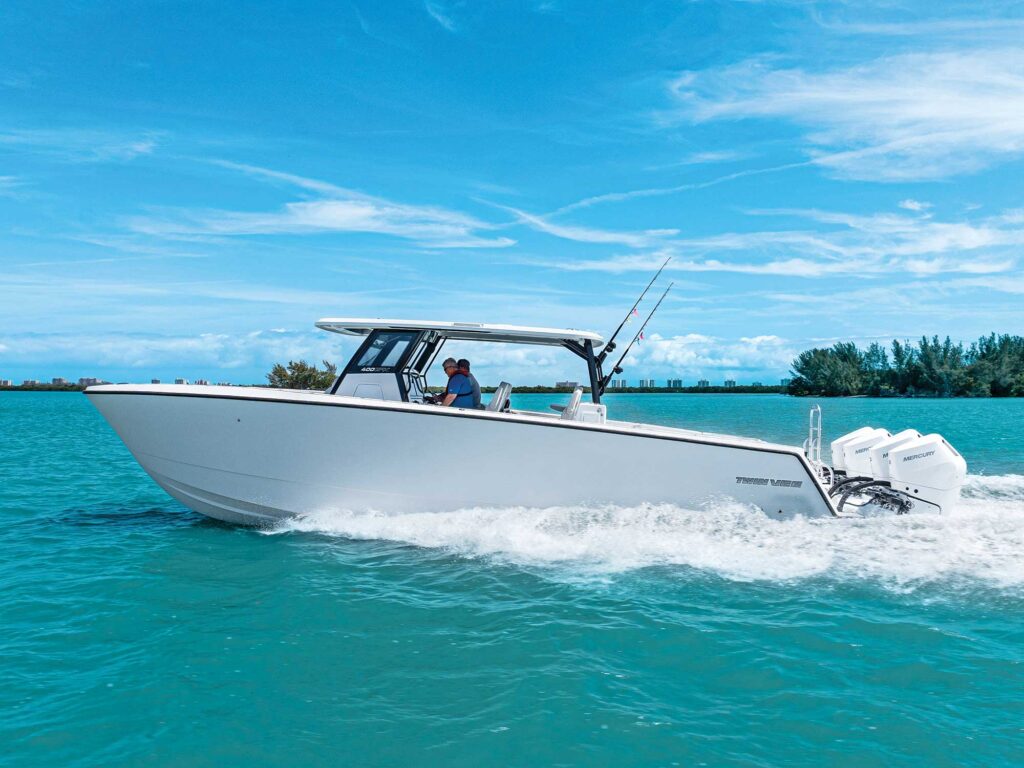
Twin Vee 400 GFX2
The new Twin Vee 400 GFX2 is the next generation of the builder’s GFX model , with many redesigned features and a new digital control system to make operation smooth and seamless.
As of press time, we haven’t been able to get on the Twin Vee 400 GFX2, the newest model in the lineup. But we will soon. Here’s what we know about the company’s flagship offering. This boat is designed to be an offshore fishing machine. It will feature more than 450 square feet of deck space, 2,500 quarts of insulated storage, 150-gallon livewell capacity, and plenty of space to fight and land fish.
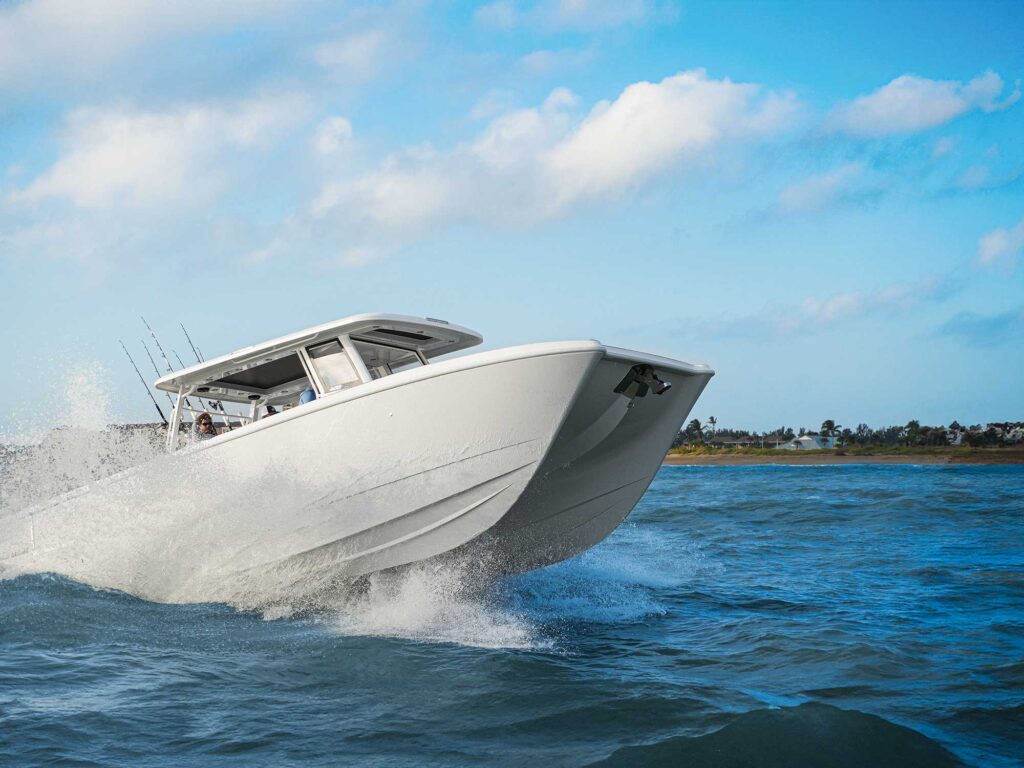
Fishing-wise, the GFX will have twin 475-quart coffin boxes with stainless-steel inserts and two in-deck 700-quart fish boxes with macerators. There will also be four electric-reel outlets if you’re looking to fish deep. For rod holders, there will be 10 mounted into the gunwales per side, plus eight more on the hardtop piping aft of the helm. The main cockpit will have a rear-facing tackle station to prep your arsenal. A starboard-side tuna door helps for landing large pelagics and doubles as a great spot for dockside boarding. The helm has triple captain’s chairs, with additional seating for three just aft. A fully enclosed windshield keeps the captain and crew protected from the elements. The dash has space to mount twin 22-inch MFDs. A freshwater head in the console and transom jump seats add to the creature comforts.
The 400 GFX2 can be powered by quad Mercury, Yamaha or Suzuki outboards up to 1,800 hp total. Depending on your power choice, cruising speed should be in the mid-40s, with top speeds in the high 60 mph range.
| $793,600 | |
| 40’0″ | |
| 12’0″ | |
| 2’3″ | |
| 14,500 lb. | |
| 750 gal. | |
| 1,800 |
Twin Vee – Fort Pierce, Florida; twinvee.com
- More: Aquila , August/September 2024 , Boats , Center Consoles , Fishing Boats , four winns , invincible , twin vee , world cat

Boat Test: 2024 Jeanneau NC 895 Sport Series 2

Hydrogen Power for Boats
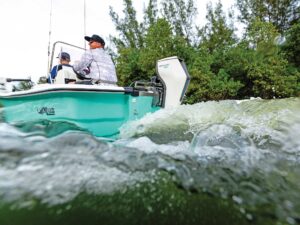
Decoding the Horsepower Ratings of Electric Motors
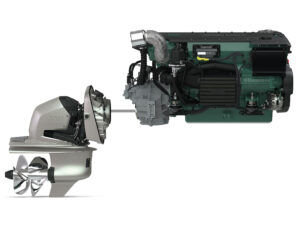
Volvo Penta D6 Diesel DPI

Choosing the Right Tools for Boat Repairs

What Are the Best Trolling Motor Batteries for Your Needs?

Guide to LED Pontoon Boat Lights

- Digital Edition
- Customer Service
- Privacy Policy
- Terms of Use
- Cruising World
- Sailing World
- Salt Water Sportsman
- Sport Fishing
- Wakeboarding
Many products featured on this site were editorially chosen. Boating may receive financial compensation for products purchased through this site.
Copyright © 2024 Boating Firecrown . All rights reserved. Reproduction in whole or in part without permission is prohibited.

- 27′ Gen 2
- 31′ AmeraCat
- Commercial Cats
- 27′ Gen II
- Fish Pictures
- Charter an AmeraCat
- Our Build Process
- Accessories
Power Catamaran
AmeraCat wanted to design a center console fishing boat that would fill the gap between 27′ and 39′, so, we created the 31′ AmeraCat. We feel that for the sport fisherman, this is one of the best offshore fishing power catamarans we offer. Great for Charter Boat Captains as well as the everyday fisherman, this center console will meet all your needs and then some. Here are a few pictures of the 31′ AmeraCat power catamaran as well as some of the available options:

Specifications:
- Aprox. Dry Hull Weight- 4850 lbs
- LOA- 31′ 0”
- Beam- 9′ 10″
- Max HP- 800hp
- Fuel Gallons- 265 gallons
- Hull Draft- 15′
- STD Livewell Capacity: 60 Gal
- STD Fishbox Capacity: Approx 400 Quarts
- Freeboard AFT:
- Freeboard Bow:
- Trailering Height:
The 31′ AmeraCat can handle a lot of upgrades. At this size, you are able to add flying bridges to your catamaran, as well as a ton of other features to make your fishing experience even better. When it comes to a boat, SIZE MATTERS! With this offshore fishing catamaran, you have plenty of room to walk around, making it easy to fish comfortably. All of our Center console fishing boats offer more room then most of our competitors because we offer something, they don’t. A power catamaran that is built with absolutely NO WOOD! We have a unique system of using only high density foam and hand laid construction. Our 31′ center console power cat is lighter, which means better fuel economy, and it doesn’t effect the stability of the boat. The 31′ center console has a max of 700 hp and can house twin 225-350 hp outboard engines, getting you to the fishing grounds fast and without whiplash from high seas.
Ready to get in touch with us to schedule a demo of the 31′ AmeraCat center console AmeraCat? Please use our contact form at the bottom of this page, or visit our Build A Boat page to choose all of the custom upgrades you can add to this catamaran. We can also be reached during normal business hours at 1-772-359-3641 or via email at [email protected]. We look forward to hearing from you. Always remember, with AmeraCat, you are always dealing directly with the manufacturer, not a dealer. Dealing directly with us allows you to get factory direct pricing and no one knows a boat better then the creator!
Not located in our area? We also offer delivery of your brand new center console fishing catamaran at a reasonable rate. We also take trade-in on your old boat and give you the most amount of money possible towards your new boat*
Not the right size boat for you? That’s okay with us, we have more sizes for you to choose from. Also check out:
- 25′ Single Engine AmeraCat
- 27′ Gen II
Contact AmeraCat
- Best Contact Phone *
- Comments/Questions
Search Our Site
- Aprox. Dry Hull Weight- 2860 lbs
- LOA- 25′ 5”
- Beam- 8′ 6"
- Max HP- 350hp
- Fuel Gallons- 85 gallons
- Hull Draft- 15'
- STD Livewell Capacity: 45 Gal
- STD Fishbox Capacity: 200 Quarts
- Aprox. Dry Hull Weight-3340 lbs
- LOA- 27′ 2”
- Max HP- 600hp
- Fuel Gallons- 150/160 gallons
- Hull Draft- 14'
- STD Livewell Capacity: 50 Gal
- STD Fishbox Capacity: Approx. 300 Quarts
- Beam- 9′ 10"
Caught on an AmeraCat!
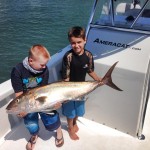
Privacy Overview

9 Best Power Catamarans For Rough Seas and Coastal!
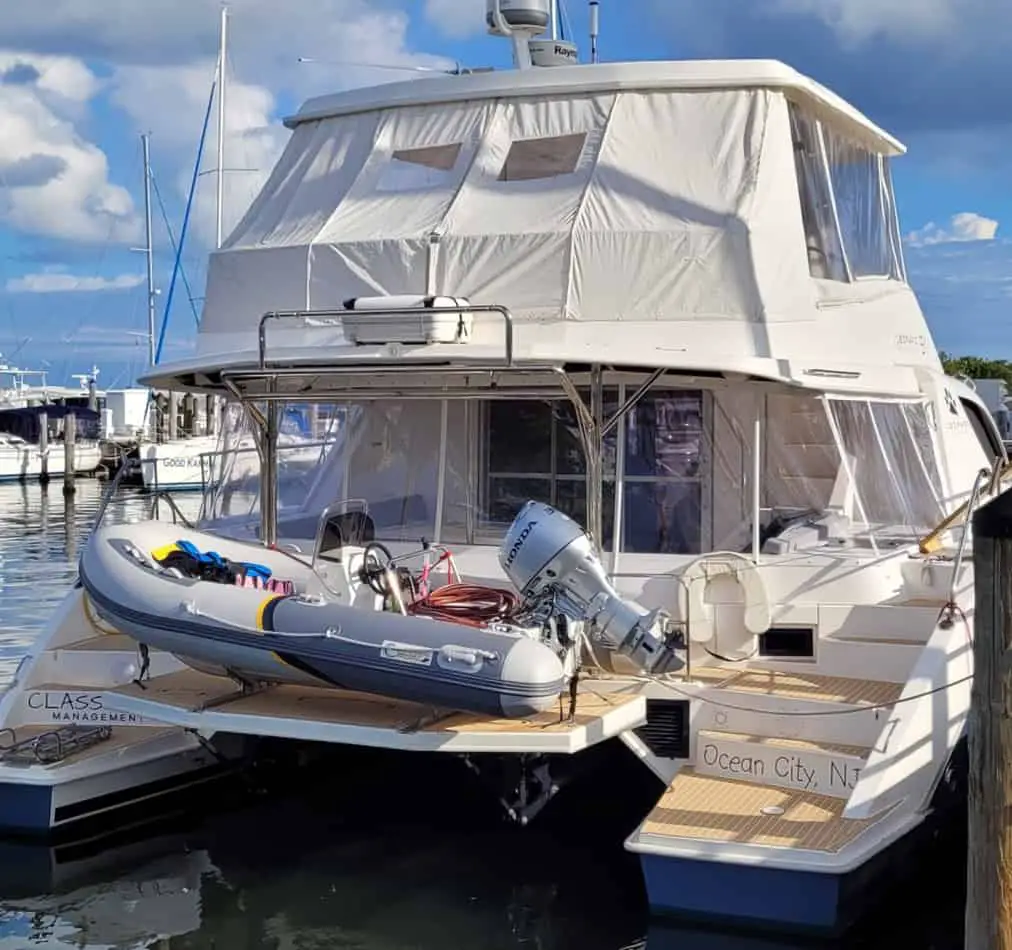
As an Amazon Associate, we earn from qualifying purchases. We may also earn commissions if you purchase products from other retailers after clicking on a link from our site.
Power catamarans are gaining popularity in the cruising world thanks to their enhanced stability and ease of operation. They’re ideal for coastal cruising but can also be used for ocean crossing thanks to their stability and speed.
Here are some of the best power catamarans on the market:
- Fountaine Pajot MY6
- Nautitech 47 Power
- Horizon PC74
- Lagoon Seventy 8
- ArrowCat 420
- Sunreef Supreme 68
In this article, I’ll review some of the best power catamarans out there. I’ll also go over the main features of different power cats and if they can handle rough weather.
But before we dive in, let’s get a better understanding of what power cats are.
Table of Contents
What Is a Power Cat?
A power catamaran (power cat) is a motor-powered boat that, unlike traditional boats, has two hulls connected by a bridge deck. These vessels are more stable than monohulls because of their wide base.
Power cats also don’t have a leaded keel to weigh them down, so they’re pretty lightweight and fast. The lack of a keel also means that power cats are more suitable for shallow waters.
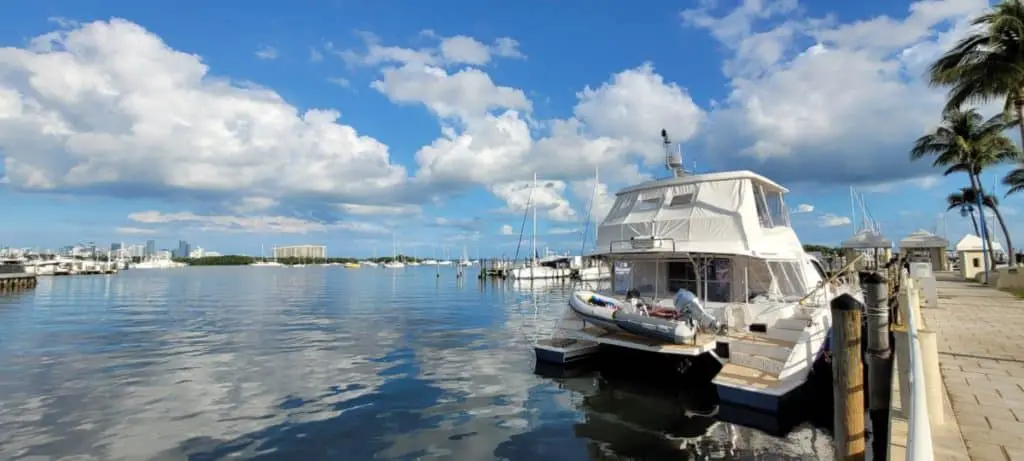
They feature large engines designed to handle their bigger bodies and weights, and serve different purposes, like fishing, cruising, or crossing rough seas. In addition, each hull has a separate engine which makes them more maneuverable, especially at turns and tight spaces.
Power catamarans don’t have sails or masts and get all of their power from the combustion engine (or electric motor), unlike their sailing cousins. In addition, these vehicles are much easier to steer because of their increased stability.
Power catamarans have more interior and exterior space thanks to their multihull design, making them perfect for cruising and liveaboard . They also have ample space for storing everything you need on a cruise without worrying about weighing it down. Catamarans offer increased privacy as well because each hull houses one sleeping area, separated by the living area between them.
Are Power Cats Good in Rough Water?
Power catamarans are good in rough waters particularly because of their multi-hull design. Their wide base makes them stable, and their high speed allows for outrunning bad weather.
Power cats that feature a high bridge clearance, will handle rough waters effortlessly. With the added height, you won’t experience pounding and slamming even in heavy waves, allowing the crew to easily control the vessel in challenging situations.
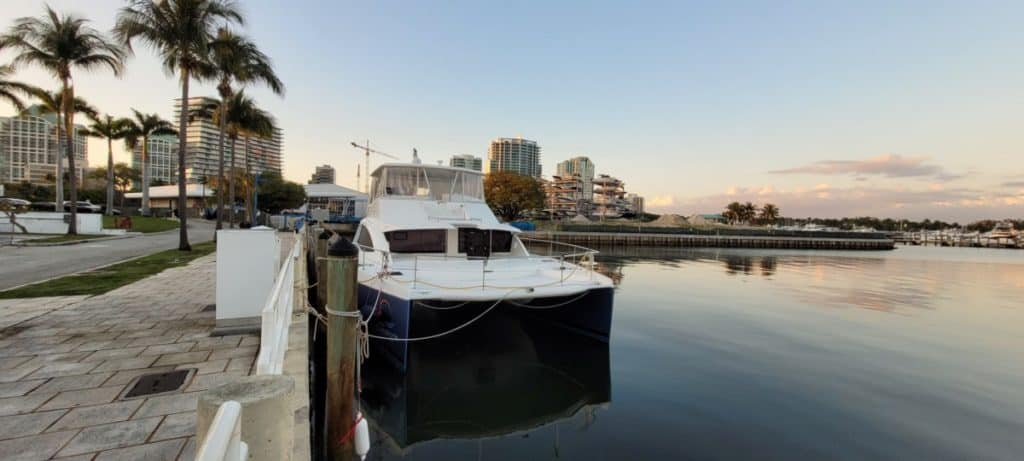
These boats are also faster than their sailing counterparts, which means they can get you out of rough waters quickly.
In addition, since catamarans are large and tall, maneuvering is easier because you have a better view of the surroundings. Additionally, you can steer from the interior cockpit (on certain models), making it easier to control the vessel in bad weather.
Finally, although a power cat doesn’t have a keel to help it right itself in case of capsizing, it will still float easily because of its positive buoyancy.
Are Power Catamarans More Efficient?
Power catamarans are more fuel-efficient than monohulls because they don’t have leaded keels. While keels are designed to offer stability by weighing down the vessel, they increase the wetted surface and thereby add drag.
Due to the catamarans’ narrow bow entry, there’s lower resistance, leading to smoother acceleration and greater fuel economy in catamarans. In addition, power cats show fewer spikes in fuel consumption in a single power band, especially because of their smooth acceleration and fuel consumption.
The figures reported by cat owners or manufacturers show that power cats have the best power-consumption-to-speed ratios.
That being said, you can improve fuel efficiency by maintaining lower speeds; studies have shown that speed can be the most important factor in fuel efficiency, regardless of the number of engines or hull types.
Now that you have a better understanding of power catamarans, let’s take a look at the ten best models on the market.
1. Leopard 53
This 53ft (16.19m) power cat is the fourth generation of the widely popular Leopard catamarans, and brings with it all the great features from her predecessor, the 51.
Although the 51 was the company’s best-selling cat, they added these features to the 53 along with new ones to repeat its success. For example, they have built an enormous saloon, flybridge, and galley by removing the foredeck cockpit in the 51 PC, making it 30 percent larger than the previous model.
This model comes with three or four stateroom layouts, with the 3-stateroom version featuring an owner’s stateroom, two sinks, a loveseat, and lots of storage space.
With two Yanmar 370 hp engines, a maximum speed of 22 knots, and a cruising speed of 17.5, you can enjoy a magnificent ride, whether it’s long-distance cruising or a fun night out with friends.
2. Fountaine Pajot MY6
This luxury power cat is 44ft (13.40m) long, making it super spacious and suitable for families and big parties. With its spacious flybridge, sunbathing lounge, and enormous galley, it’s nothing short of a second home on the water.
You can steer the cat from the saloon or the 21sqm (68 sq ft) flybridge which features a sunbathing lounge, a pool, and a galley.
This motor yacht continues to delight with its luxurious combination of privacy and pleasure, with views of the sea in almost every interior space. With three cabins, two bathrooms, six cabin beds, ample storage, and a kitchen that opens into the cockpit, you can enjoy practicality and luxury in one place.
The MY6 is exceptionally seaworthy and stable thanks to its wave-piercing hulls and Volvo IPS engines.
Like all power cats, it has straightforward steering, enabling you to control this beast even in the roughest circumstances.
3. Nautitech 47 Power
Powered by dual Volvo Penta D4 engines, this model can output 225-300hp, reaching a maximum of 22 knots and a cruising speed of 18-20 knots . This 46′ 8″ (14.23m) long power cat comes in three or four cabin versions, depending on the customer’s preference.
No matter which layout you choose, you’ll get a spacious, luxurious, and comfortable catamaran with panoramic views from the cabin. The sleek, streamlined exterior design ensures elegant sailing and seaworthiness.
It’s easy for passengers to navigate the deck thanks to its seamless design that connects the saloon to the cockpit and the rear deck. The stern features a big swimming platform that can also accommodate a tender. The cockpit is usable in different weather conditions thanks to the clear covers wrapping the whole area.
This efficient catamaran promises long cruising for big families and groups with two 300L water tanks and a pair of 645L fuel tanks.
4. Horizon PC74
The Horizon PC 74 is another luxury power cat that can give you the comfort of your home on water. This 73′ 9” (22.48m) long power cat with a 2,000gal (7570L) fuel tank is an enormous vessel that can accommodate more than 14 people.
The enormous hardtop on the three-piece windshield, the teak dining table, the U-shaped bar, the sun pad, and the swing-out stools all guarantee that you’ll have the luxury cruising experience of a lifetime.
This vast and wide catamaran allows you to access the aft deck from the flybridge via a curving staircase. The vast aft deck has a ten-person dining table, a wet bar, and storage space. You can separate the interior and exterior spaces through sliding glass doors and make the space appear bigger by opening them.
Reaching a top speed of 23 knots and a cruising speed of 19 knots, this enormous catamaran was built for efficiency and practicality.
5. Lagoon Seventy 8
This 78’1″ (23.80m) power cat with two 494 HP engines and a 2246gal (8500L) fuel capacity is one of the largest power cats on the market, offering both comfort and reliability. The enormous flybridge can feature a jacuzzi, a sunbathing area, a large foldable dining table, and a hardtop with a moveable roof. However, you can customize the flybridge based on your preferences.
The designers have compromised nothing in terms of elegance and high-quality materials with top-of-the-line finishes and interior paneling to create the kind of luxury you want.
The saloon is huge, well-ventilated, and separated from the exterior by glass doors and panoramic windows.
But what sets Lagoon Seventy 8 apart from other power cats, in addition to its enormous size, is the wide choice of layouts. You can choose between five different versions, all offering the same amount of storage space, living and sleeping area, and privacy.
Additionally, some versions are fully customizable, allowing you to pick every detail to your liking.
6. ArrowCat 420
This 41′ (12.73m) long express cruiser is a semi-custom catamaran with two-stateroom and three-stateroom layouts. The ArrowCat 420 is designed and built with comfort and strength in mind, and capable of handling rough waters safely.
The two Suzuki 350 hp engines give this model a maximum speed of 40 knots and a cruising speed of 20 knots.
The streamlined design and the angled hulls ensure the vessel cuts through the waves effortlessly, making it easy to maneuver.
The fully-equipped head features an electric toilet, a shower, sink, and mirrors, coupled with a dining table, floor storage locker, and teak-finished floors. This cat is built to combine luxury and comfort for both onshore and offshore cruising.
7. Bali 4.3
This 43′ (13.1m) power cat is made for ocean crossing in mind. With five different layouts featuring different combinations of cabins and heads, the company ensures you’ll get the kind of setup you want. Regardless of the layout, this cat offers a spacious master suite with a large double bed and other private sleeping quarters.
You can quickly add to the overall space by removing the adjustable glass doors to merge the cockpit with the saloon.
A feature that sets the 4.1 apart from its predecessor is the fixed aft deck between the hulls, which provides a passageway and eliminates the need to go from one hull to the other without entering the cockpit.
8. Sunreef Supreme 68
According to its designers, this model was built with a radical concept in mind while staying true to the company’s promise of building the most comfortable and spacious power cats in the world.
One of the greatest features of the Supreme 68 is its aft garage that houses a 5m (16 ft) tender and two jet skis in addition to other water toys.
You can also transform the aft to a large platform for water sports by lowering the garage door.
The four-stateroom layout features ample storage, ensuite guest cabins, queen-sized beds, and TVs to create a memorable stay. The white and beige furniture with chrome details and floor-to-ceiling glazing create a soothing atmosphere that blends with the practicality of the well-equipped galley.
However, if you’re looking for something different, you can opt for a customized model from three different layouts.
9. Hudson 48
The sleek, diamond-cut design of this 46.46’ (14.16m) long power cat is usually the first thing to catch your eye.
It’s a light displacement cat that ensures fast cruising with a top speed of 24 knots and cruising speed of 8 knots thanks to the two 370hp Yanmar V8 engines.
The three-cabin layout features a master stateroom with a spacious and well-ventilated design made possible via the three overhead windows and opening deck hatches.
The saloon’s enormous helm station allows for comfortable and safe accommodation, making it great for rough waters and bad weather conditions.
This model also offers a few entertainment options with its large TV systems and mood lighting. The storage areas and the full-sized walk-in wardrobe give this model a comfortable, homely setting.
Here are Some of My Favorite Catamaran Cruising Resources
Thank you for reading this article. I hope you found it helpful as you hopefully start your sailing adventures. Here are some resources that I use as a sailor that I hope you’ll also find helpful. These are affiliate links, so if you do decide to use any of them, I’ll earn a commission. But in all honesty, these are the exact things that I use and recommend to everyone, even my own family. Sailboats: If you’re looking for the best boat to suit your needs, I would recommend a catamaran. If you’re interested, I can show you the differences between catamarans and other types of sailboats .
Books: For getting started, I really like Cruising catamarans made easy . It is actually a textbook from the American sailing association; it is used to get a cruising catamaran certification. There are some other great books, and I have compiled a list of books about cruising catamarans that you will find useful.
Communication: Being out on adventures, whether it be sailing or climbing mountains, good communications are essential to being safe. I recommend two things Google fi (incredibly simple cellular data all over the world) and Garmin inreach mini (for text and voice in remote areas without cell coverage)
Sailing courses: Online sailing courses are great for beginners starting out their sailing career; it’s an efficient way of learning the basics of navigation, throttle controls, and maritime safety. I suggest starting with two free courses from NauticEd .
To see all my most up-to-date recommendations, check out this resource that I made for you!
Owner of CatamaranFreedom.com. A minimalist that has lived in a caravan in Sweden, 35ft Monohull in the Bahamas, and right now in his self-built Van. He just started the next adventure, to circumnavigate the world on a Catamaran!
Leave a Reply Cancel reply
Your email address will not be published. Required fields are marked *
Save my name and email in this browser for the next time I comment.
Recent Posts
Must-Have Boat Gear for Catamaran Sailors!
Sailing is probably the most gear-intensive activity I've ever done; there are so many decisions to be made about what gear to buy now, for tomorrow, and what to definitely never buy. The gear on...
6 Best Trailerable Trimarans For Bluewater and Coastal Sailing
Having a boat costs a lot of money, even when you are not using it, marina fees, etc. And once it is in the water most sailors never go very far from their "home marina" and sailing will be somewhat...
- No results were found.
47 Molokai Power Catamaran
Is the Aquila 47 Molokai Power Catamaran a luxury catamaran with serious fishing chops? Or is it a serious fishing catamaran with luxurious appointments and accommodations? That’s for you to decide.
One thing that is certain is that the Aquila 47 Molokai is the first catamaran of its kind. Until now, if you wanted a center console catamaran with the speed, ride and fishability required for overnight runs to the canyons, banks or islands, your sleeping accommodations were going to consist of a beanbag on deck or, at best, an airbed on the console floor.
The Aquila 47 Molokai, though, combines real offshore fishing chops with not only a head and shower but also a spacious, air-conditioned stateroom with a queen-sized island berth. Two entry doors provide easy access, while large overhead and side windows flood the cabin with natural light during the day and let you stargaze from your bed at night.
Powered by twin 600 hp or quad 400 hp Mercury Verado outboards, the Aquila 47 Molokai delivers thrilling performance and a smooth, predictable ride, thanks to her aggressive twin-step hull design and strong, lightweight vacuum-infused construction. Joystick piloting makes close-quarters maneuvering a breeze, while a 1,048-gallon (3,967 Liter) fuel capacity brings any horizon within reach.
Underway, seven protected helm seats in two air-conditioned rows keep your crew safe and comfortable, while state-of-the-art Raymarine electronics, C-Zone digital switching and a custom-tuned Fusion audio system put information and entertainment at your fingertips.
On the fishing grounds, pressurized livewells fed by a Hooker sea chest keep your bait lively, while cavernous fish boxes accommodate the largest fish and longest trips. Electric reel outlets provide power for deep-dropping, and the carbon fiber hardtop is factory reinforced for outriggers and custom towers.
So, where will you go with your Aquila 47 Molokai?
Download Brochure
Request Information
Featured videos.

Cutting-Edge Raymarine Electronics Explored

Engine Package: Mercury 600hp Verado Outboards

Entertainer's Choice: Summer Kitchen Option
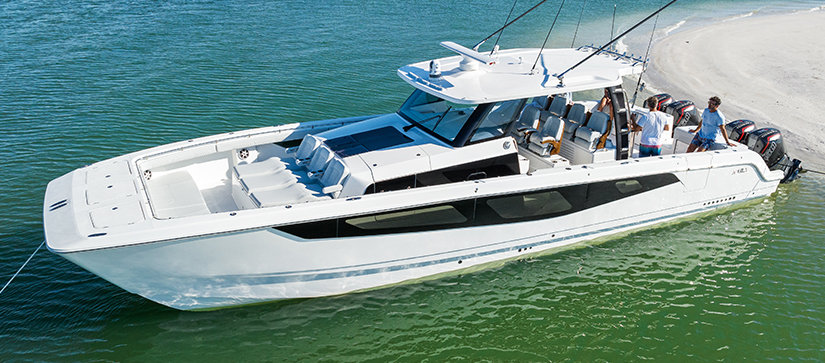
Aquila 47 Molokai Full Walkthrough
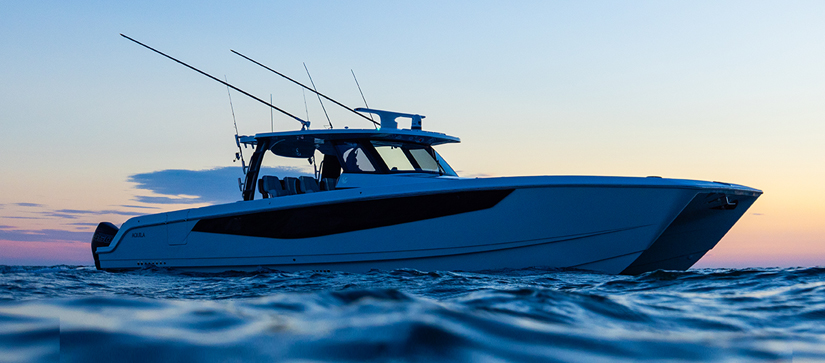
Aquila 47 Molokai Power Catamaran | This Cat Can Fish
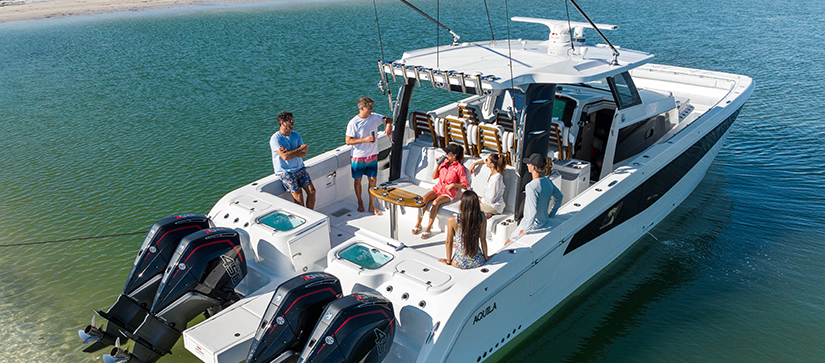
The Fishing Catamaran, Elevated
Beyond the brand: 47 molokai showcased.
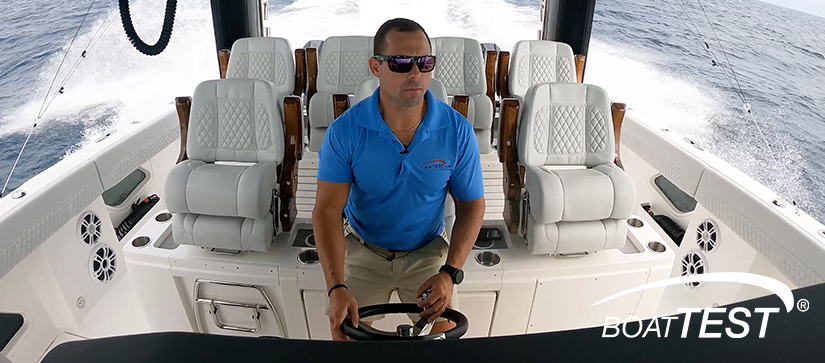
BoatTEST: Aquila 47 Molokai Performance
Captain Trip from BoatTest comes aboard the Aquila 47 Molokai to observe everything this power catamaran has to offer including the top engineering, high performance, and luxury all combined in this unique vessel.
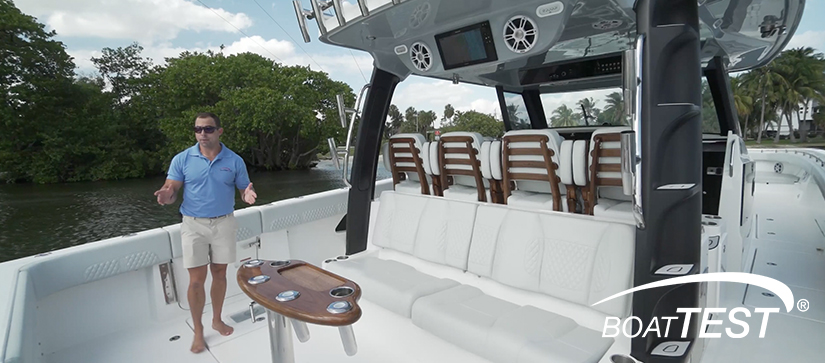
Salt Water Sportsman On Board: Aquila 47 Molokai
Discover the ultimate offshore fishing experience with the Aquila 47 Molokai, showcased at the 2023 Fort Lauderdale International Boat Show. Salt Water Sportsman takes you on a journey aboard this high-performance catamaran, highlighting its exceptional capabilities that distinguish it as a top-tier fishing vessel.
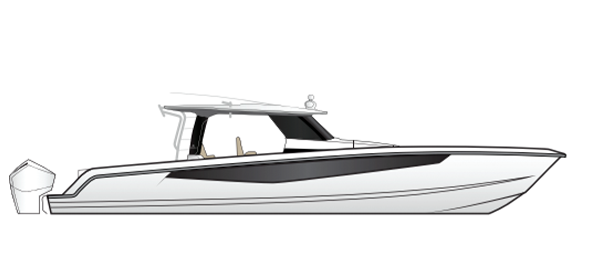
Specifications
| Category Heading | Specs Heading |
|---|---|
| Length Overall | 15.06M / 49'4" |
| Hull Length | 13.94 M / 45'8" |
| Beam | 4.44 M / 14'7" |
| Hull Draft (Motors Up) | 0.6555 M / 2'2" |
| Hull Draft (Motors Down) | 1.111 M / 3'8" |
| Bridgedeck Clearance | 0.34 M / 1'1" |
| Dry Weight | 10,350 KG / 22,818 LB |
- Download Specs
Take a Virtual Tour
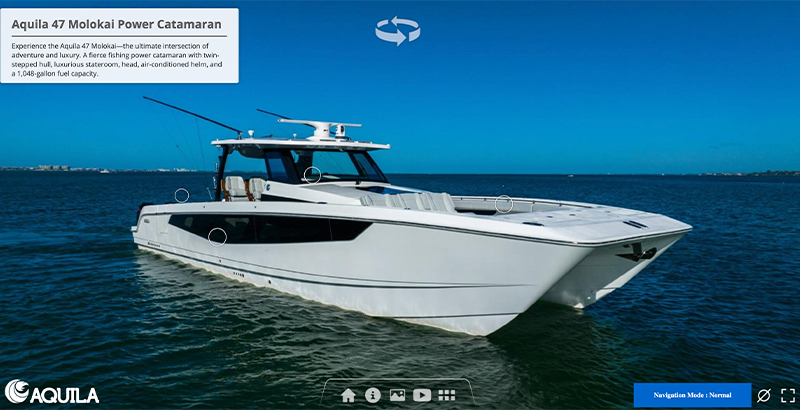
Aquila Models
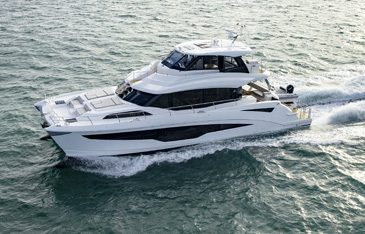
Aquila 70 Luxury
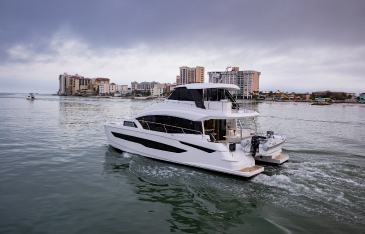
Aquila 54 Yacht
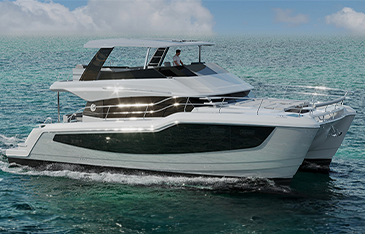
Aquila 50 Yacht
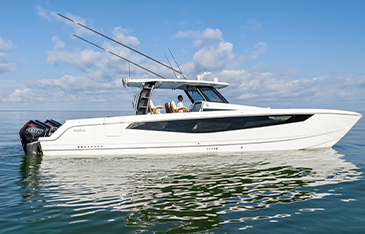
Aquila 47 Molokai
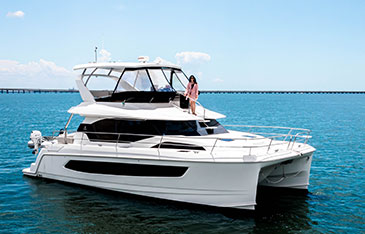
Aquila 44 Yacht
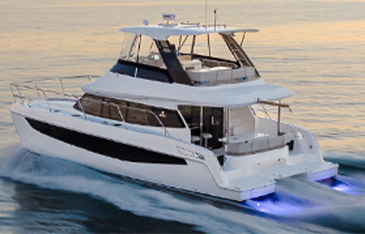
Aquila 42 Yacht
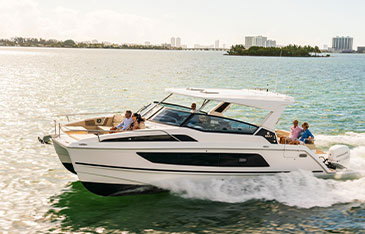
Aquila 36 Sport
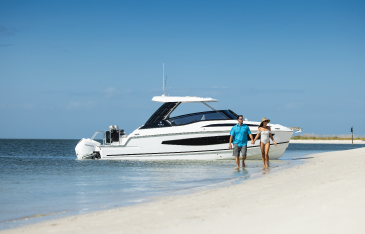
Aquila 32 Sport
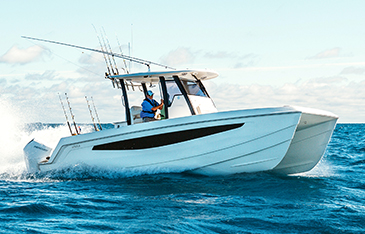
Aquila 28 Molokai
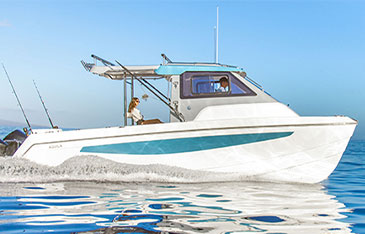
Aquila 28 Molokai Cuddy
Scientists Are on the Cusp of Unleashing the Power of the World’s Largest Battery
A new testing facility off the Oregon coast could be the spark that ignites a long-awaited energy revolution.

According to the U.S. Energy Information Administration, the theoretical annual energy potential of crashing waves along the U.S. coast is some 2.64 trillion kilowatt hours , or roughly two-thirds of the country’s total utility generation in 2021. While squeezing every ounce of these kilowatt hours from the ocean is likely impossible, wave energy could still account for around 10–20 percent of the U.S.’s renewable energy mix.
And grid energy is only one application for these wave energy converters (WECs). Companies like Oregon-based C-Power are developing devices that bring a “power strip and ethernet cable to the ocean,” according to its CEO Reenst Lesemann.
“[The ocean] is our biggest, best, and most flexible battery that we have,” Lesemann says. “If you can’t tap that battery, it’s a power desert.”
C-Power is one of the many companies looking to revolutionize how we explore and power the world’s oceans, and it hopes to test its machines, the SeaRAY and the utility-grade StingRAY, at PacWave. Supported by a collection of government, state, and federal grants, PacWave will be the first wave energy testing facility in the continental U.S. and one of only a few similar facilities around the globe. Based in Newport, Oregon, it will play a central role in figuring out what does and doesn’t work—and hopefully focus the industry to unleash its long-awaited affordable ocean energy revolution.

Today, expensive boats provide mere kilowatts of power and limit research time for exploring some of the planet’s most vulnerable ecosystems. Wave energy could provide limitless electrons for deep-sea missions, deliver off-shore power to far-flung coastal communities , feed always-on sensors designed to probe deep sea habitats , and enhance thousands of wind turbines already anchored offshore, all while creating a crucial renewable energy safety net when the sun isn’t shining and the wind isn’t blowing.
So while solar and wind energy are breaking records on the regular, why has wave energy lagged behind? Turns out, it isn’t easy building machines in the ocean.
THE FIRST ATTEMPT AT CAPTURING WAVE POWER didn’t really arrive until the 1970s, when the U.K. began investing in alternative means of energy following the 1973 Oil Crisis, an oil embargo placed on the U.S. during the Arab-Israeli war that same year. Pioneering this research was Stephen Salter, a professor of engineering at the University of Edinburgh who designed dynamically shaped floats called “ducks” (so named because the device bobbed up and down in the water like some kind of energy-harnessing waterfowl).
Although it had funding for seven years, the nascent wave-energy program known as “ Salter’s Duck ” never delivered on its renewable energy promise due to government indifference and the arrival of plentiful and cheap oil in the 1980s .
Despite its unrealized promises, Salter and his floating "ducks" planted the seeds of a possible wave energy future.
“From my perspective, [Salter’s Duck] kicked off the modern wave energy converter field,” says Michael Lawson, Ph.D., marine energy group manager for the National Renewable Energy Laboratory’s (NREL) water power research and development program. “You saw a slow, minimal investment in R&D of the technology until the early 2000s, where you saw some significant investment in Europe in tidal and wave energy technologies.”
From this rush of alternative energy investment came companies like Wavebob, Pelamis, Aquamarine, and many more that designed wave energy devices of all shapes and sizes—and if they were lucky, deployed them. But in the end, all three companies met the same fate. Whether put into receivership, bankruptcy, or otherwise going defunct, none of them could deliver on the wave-power dream.
And this is where an accreditation facility like PacWave becomes essential.
“PacWave will be able to go in … and figure out how to characterize the performance, to measure power, forces, and loads, and be able to find what works for moorings,” says NREL’s Arlinda Huskey , who was previously involved in the accreditation of certification testing at the National Wind Technology Center near Boulder, Colorado. “There are so many things that we need to learn, that we need to figure out if these devices are going to be commercialized.”
PACWAVE IS ACTUALLY TWO TESTING FACILITIES with both a north and south location. The north location, which is already operational, tests smaller prototypes but is in shallower waters, arranged close to port, and isn’t connected to the mainland grid . The south location is where you’ll see lots of “steel in the water,” according to Dan Hellin, deputy director at PacWave.
When operational in 2025, PacWave south will be capable of hosting 20 wave energy converters . These stations will be further divided into four testing berths, each with their own dedicated transmission cable that’s connected to the Utility Connection and Monitoring Facility on land. Located at the Driftwood Beach State Recreation Site south of Newport, this facility will allow developers to monitor their wave machines in real time. In July 2024, crews began installing cables connecting these testing berths to the mainland grid.
“We’re building the sandbox, and anybody can come and bring their toys to test in the sandbox,” says Burke Hales, Ph.D., a professor at Oregon State University and chief scientist at PacWave. “An opaque and unprovable megawatt is less valuable to you than a verified 500 kilowatt. So we do that monitoring, we verify the power condition.”
Of course, this sandbox isn’t located in a sterile testing environment, but a roiling and diverse natural ecosystem. Creating the testing facility along the Oregon coast, as well as putting experimental devices in its waters, comes with some environmental hazards. Ocean noise can impact marine mammal migration, hardware could entangle wildlife (especially if crab pots migrate to the testing site), and artificial reef structures can create habitats for lingcod and octopus to prey on flatfish like flounder, a species previously safe in this area from such predators.
.css-1i6271r{margin:0rem;font-size:1.625rem;line-height:1.2;font-family:UnitedSans,UnitedSans-roboto,UnitedSans-local,Helvetica,Arial,Sans-serif;padding:0.9rem 1rem 1rem;}@media(max-width: 48rem){.css-1i6271r{font-size:1.75rem;line-height:1;}}@media(min-width: 48rem){.css-1i6271r{font-size:1.875rem;line-height:1;}}@media(min-width: 64rem){.css-1i6271r{font-size:2.25rem;line-height:1;}}.css-1i6271r em,.css-1i6271r i{font-style:italic;font-family:inherit;}.css-1i6271r b,.css-1i6271r strong{font-family:inherit;font-weight:bold;} “Part of the issue is there’s been very few wave energy devices in the world, so there’s been very little research done around them.”
“So we’ve got a benthic ecosystem monitoring requirement,” Hales says. “We’re out there checking to see if ‘Ok, did the crabs all leave. Did we change who’s living on the seafloor because we put anchors down there.’ So that’s all part of it … we’ve even got plans for mitigating influence on bats.”
However, PacWave is a proving ground for first-of-its kind technologies, and there’s a certain level of unknowns that come with the project—both in terms of what WECs will generate the most watts and also what impact machines will have on surrounding ecosystems.
“Part of the issue is there’s been very few wave energy devices in the world, so there’s been very little research done around them,” Hellin says. “Part of what PacWave is about is to try and monitor the deployment of wave energy devices and answer some of these questions ... you can’t answer them unless you have something in the water.”
ONCE PACWAVE SOUTH GOES ONLINE IN 2025, its experimental kilowatts won’t be confined to a lab. The project is directly tied into the local grid, operated by the Central Lincoln Peoples Utility District (PUD), and will provide energy to the residents of Newport. This will give developers an idea of just how competitive wave energy is compared to other sources. At full capability, PacWave will power the equivalent of 2,000 homes from the electrons produced by ocean waves—a small output that comes with big implications.
While it’s easy to imagine a fleet of these devices bobbing up and down in the waters on the distant horizon, similar to the growing number of wind farms off the European coast, this isn’t the most likely application for WECs in the near term. Less energetic coasts, especially in warm locales or along eastern shores, likely won’t benefit from these devices compared to more turbulent waters in western, colder environments. But even in these choppy seas, WECs could start out with relatively niche applications.

“There’s going to be different uses for it,” Huskey says. “One is sending power back to the mainland … it could be deployed for emergency situations where some location has a hurricane or something … there could be ROVs that are deployed offshore and they just need a charge.”
“My gut tells me that you’ll see at least a few different concepts because the end uses are so different,” Lawson says, also mentioning how remote ocean observation technologies and remote communities could benefit the most. “Utility scale [wave] farms could be combined potentially with a floating offshore wind farm. Those technologies are going to have to be integrated with that wind farm … sharing moorings and anchoring systems with the wind turbines.”
And all of these different WEC permutations—whether powering a research vessel , a benthic sensor array, or an entire onshore community—will get their first real-world test at PacWave. And while other renewable resources continue along in their own energy revolutions, the introduction of wave energy could be another powerful resource that taps into one of the most energetic natural processes on Earth.
“People are hoping that PacWave is going to help trigger the increase in the pace of things,” Hellin says. “Ultimately, you’ve got to be able to test it in the real world, full scale … otherwise you can’t advance to that next stage, right?”
Darren lives in Portland, has a cat, and writes/edits about sci-fi and how our world works. You can find his previous stuff at Gizmodo and Paste if you look hard enough.

.css-cuqpxl:before{padding-right:0.3125rem;content:'//';display:inline;} Pop Mech Pro: Science .css-xtujxj:before{padding-left:0.3125rem;content:'//';display:inline;}

Fourth-Dimensional Aliens Could Be Spying On Us

Aliens May Possess a Form of Consciousness

Japan Is the World’s Top Hotspot for UFO Sightings

Are Underwater UFOs an Imminent Threat?

New Clues Emerge About an Ancient Lost City

This Laser Could Unlock Interstellar Travel

UFO Sightings are Spiking. This Man Knows Why.

Magic Mushrooms May Have Shaped Our Consciousness
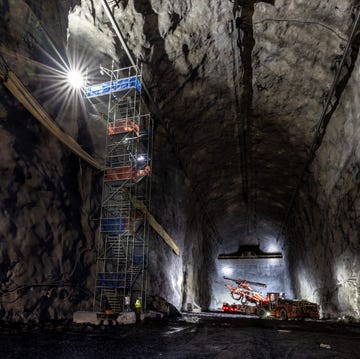
How We'll Discern the Origins of the Universe
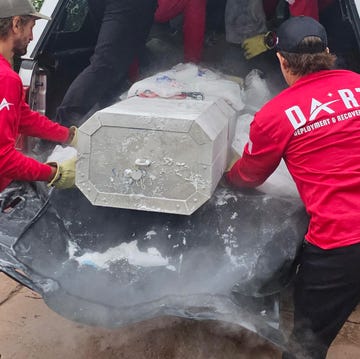
He Was Frozen in a Shed for 30 Years. Can He Rise?

Why Everything We Know About Gravity May Be Wrong

Offshore wind farms linked by underwater grid may change East Coast energy forever
O ffshore winds have the potential to supply coastlines with massive, consistent flows of clean electricity . One study estimates wind farms just offshore could meet 11 times the projected global electricity demand in 2040.
In the U.S., the East Coast is an ideal location to capture this power, but there's a problem: getting electricity from ocean wind farms to the cities and towns that need it.
While everyone wants reliable electricity in their homes and businesses, few support the construction of the transmission lines necessary to get it there. This has always been a problem, both in the U.S. and internationally , but it is becoming an even bigger challenge as countries speed toward net-zero carbon energy systems that will use more electricity.
The U.S. Department of Energy and 10 states in the Northeast States Collaborative on Interregional Transmission are working on a potentially transformative solution: plans for an offshore electric power grid .
At the core of this grid would be backbone transmission lines off the East Coast, from North Carolina to Maine, where dozens of offshore wind projects are already in the pipeline.
The plans envision it supporting at least 85 gigawatts of offshore wind power by 2050 – close to the U.S. goal of 110 GW of installed wind power by mid-century, enough to power 40 million homes and up from 0.2 GW today. The Northeast States Collaborative formalized their goals in July 2024 through a multistate memorandum of understanding .
Emerging research from the Department of Energy , the research company Brattle and other groups suggests that an offshore electric power grid could mitigate key challenges to building new transmission lines on land and reduce the costs of offshore wind power.
Cutting costs would be welcome news – offshore wind project costs rose as much as 50% from 2021 to 2023. While some of the underlying causes have subsided, such as inflation and global supply chain disruptions , interest rates remain high , and the industry is still trying to find its footing in the U.S.
What is an offshore electric power grid?
Today's offshore wind projects use a point-to-point, or radial design , where each offshore wind farm is individually connected to the onshore grid.
This method works if a region has only a few projects, but it quickly becomes more expensive due to the cabling and other infrastructure. Its lines are also disruptive to communities and marine life. And it requires more costly onshore grid upgrades.
Coordinated offshore transmission can avoid many of those costs with what the Department of Energy calls "meshed" or "backbone" designs .
Rather than individual connections to land, many offshore wind farms would be connected to a shared transmission line, which would connect to the onshore grid through strategically placed "points of interconnection." This way, electricity produced by an offshore wind farm would be transmitted to where it is most needed, up and down the East Coast.
Even better, electricity generated onshore could also be transmitted through these shared lines to move energy to where it is needed. This could improve the resilience of power grids and reduce the need for new transmission lines over land, which have been notoriously difficult to gain approval for , especially on the East Coast .
Coordinated offshore transmission was part of early U.S. discussions on offshore wind planning and development. In the late 2000s when Google and partners first proposed the Atlantic Wind Connection, an offshore transmission project , the benefits in both offshore renewables and the entire energy system were intriguing. At the time, the U.S. had just one utility-scale offshore wind project in the pipeline, and it ultimately failed .
Today, the U.S. has 53 GW of offshore wind projects being planned or developed. As energy researchers , we believe coordinated offshore transmission is important for the industry to succeed at scale.
56 Powerful Juneteenth Quotes To Celebrate Freedom
Offshore grid could save money, reduce impacts.
By enabling power from offshore wind farms and onshore electricity generators to travel to more places, coordinated transmission can enhance grid reliability and enable electricity to get to where it is most needed. This reduces the need for more expensive and often more polluting power plants.
A 2024 report from the National Renewable Energy Lab found the benefits of a coordinated design are nearly three times higher than the costs when compared with a standard point-to-point design.
Studies from Europe , the U.K. and Brattle have pointed to additional benefits, including reducing planet-warming carbon emissions, cutting the number of beach crossings by a third and reducing the miles of transmission cables needed by 35% to 60%.
In the U.S., offshore transmission lines would be almost entirely in federal waters, potentially avoiding many of the conflicts associated with onshore projects, though it would still face challenges.
Challenges and next steps
Building an offshore grid will require some important changes.
First is changing government incentives. The federal investment tax credit for offshore wind, which covers at least 30% of the upfront capital cost of a project, does not currently help pay for coordinated transmission designs.
Second, planning needs to take everyone's concerns into account from the beginning. While the overall benefits of coordinated transmission designs outweigh overall costs , who receives the benefits and who bears the costs matters. For example, more expensive power generators could earn less, and some communities feel threatened by offshore development .
Third, greater coordination will be needed among everyone involved to dispatch power to and from the regional grids. The Federal Energy Regulatory Commission's recent Order 1920 , requiring power providers to plan for future needs, may serve as a blueprint, but it does not apply to interregional projects, such as an offshore transmission backbone connecting over a dozen states across three regions.
The U.S. reached an important milestone in March 2024 with the completion of South Fork Wind, the country's first utility-scale wind farm , bringing U.S. offshore wind power capacity to nearly 200 megawatts. Eight more projects are under construction or approved for construction. Once built, they would bring installed capacity to over 13 gigawatts , roughly the same as three dozen coal-fired power plants .
An offshore transmission backbone could support offshore wind development and the East Coast's energy needs for generations to come.
This article was written by Tyler Hansen and Elizabeth J. Wilson from Dartmouth University, Abraham Silverman from Johns Hopkins University, and Erin Baker from UMass Amherst, and was originally published on The Conversation .
Header image by Nicholas Doherty on Unsplash
This article was originally published by Good Good Good . Good Good Good celebrates good news and highlights ways to make a difference.
Subscribe to the Goodnewsletter to get the world's best good news stories delivered to your inbox.
73 Inspirational Quotes for the Month of August (2024)

- Yekaterinburg
- Novosibirsk
- Vladivostok
- Tours to Russia
- Practicalities
- Russia in Lists
Rusmania • Deep into Russia
Astrakhan Region
The Astrakhan Region is situated in the south of Russia where the River Volga drains into the Caspian Sea forming one of the largest river deltas in Europe. It is also though a land of both deserts and semi-deserts. Historically this area was the location of Sarai-Batu - the original capital of the Golden Horde. The administrative centre is the city of Astrakhan, which arose as a Golden Horde trading point and was annexed into Russia by Ivan the Terrible in the mid-16th century. Today the city is famous for its white kremlin - the most southern kremlin in the whole of Russia.
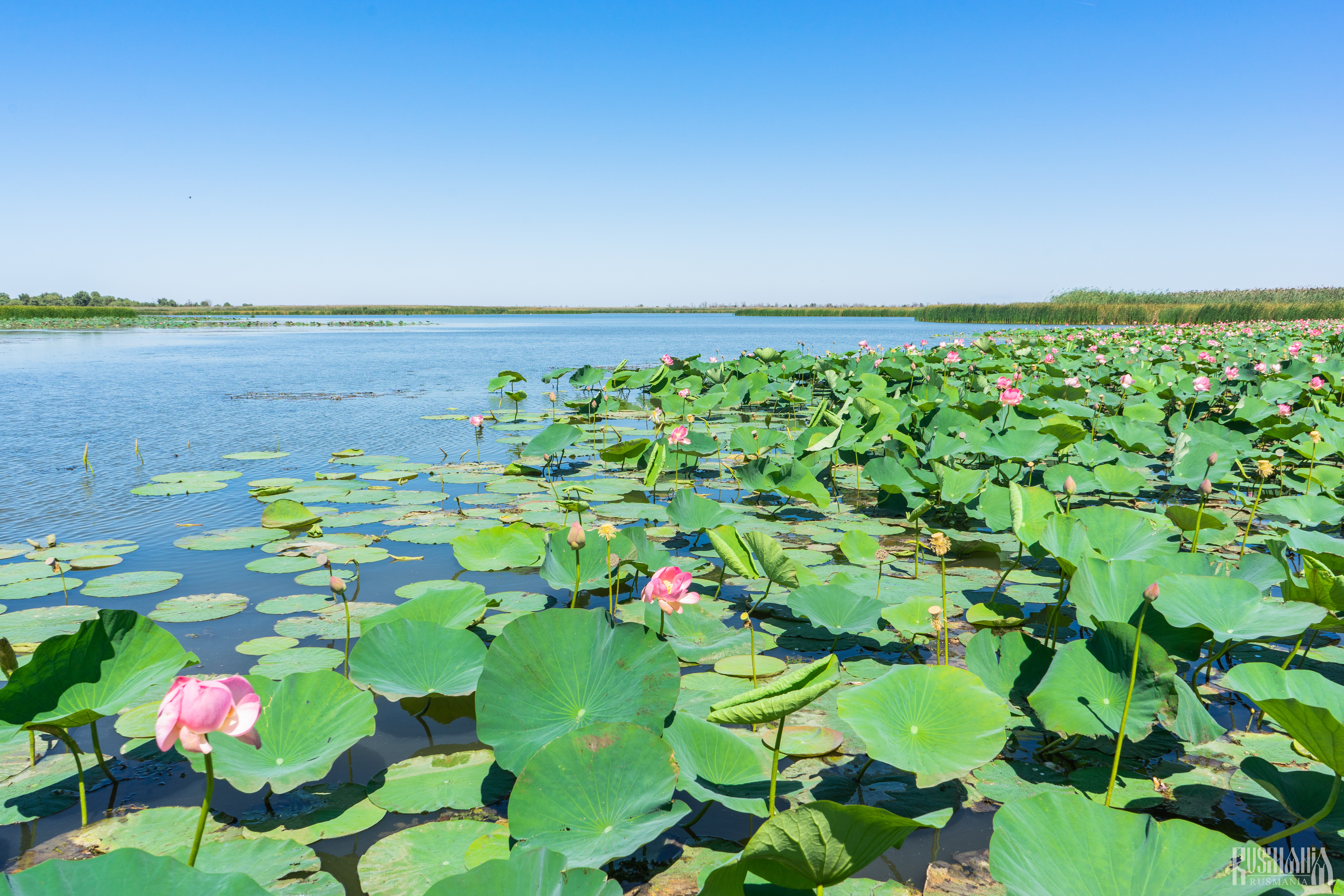
The best time to visit the Astrakhan Region is in July and August when the lotuses blossom on the Volga Delta and the famous Astrakhan watermelons are harvested. The region is also associated with the black caviar from the Caspian Sea.
Plan your next trip to Russia
Ready-to-book tours.
Your holiday in Russia starts here. Choose and book your tour to Russia.
REQUEST A CUSTOMISED TRIP
Looking for something unique? Create the trip of your dreams with the help of our experts.

IMAGES
COMMENTS
Photo via World Cat Boats. World Cat is one of the most recognizable brands in the world of power catamarans — in fact, according to the company they're the largest producer of power catamarans in the world. Their line is a mix of center console and dual console fishing and family boats ranging from 23' to 40'.
The Insetta 35IFC was designed with a singular vision… to be the best-performing center console sport fishing catamaran in its class. Enjoy unmatched performance, range, and efficiency thanks to the 35IFC's hydrofoil-assisted design. In addition to being the best High-Performance Fishing Catamaran in its class, it also provides a smoother ...
Offshore Power Catamarans. The Offshore line is a testament to the fusion of Hawaiian spirit and cutting-edge design, making it an unbeatable choice for navigating the most demanding oceans and seas. With a winning combination of performance, safety, comfort, and versatility, these catamarans cater to both fishing enthusiasts and families ...
Inshore & Offshore Express Cruisers - 32' And 42' Perfect For Family Cruising, Fishing, And Endless Adventures. ... Power catamarans are typically more fuel-efficient than monohull boats of the same size. It requires less energy and yields more performance per HP. The two hulls create little to no drag or resistance to get on plane, resulting ...
The Aquila 36 is the first vessel in the builder's series with outboard power. Aquila Boats. The Aquila 36 is a departure from her sisterships in that she is an outboard-powered, express-cruiser-style catamaran, but she also adheres to MarineMax's philosophies.. With a single main living level from bow to stern and a beam of 14 feet 7 inches, the Aquila 36 is like a bowrider on steroids.
Our Model Lineup. Innovation. Quality. Performance. Aquila Power Catamarans is the world leader in producing high-quality, innovative, and exceptionally performing power catamarans. With stringent manufacturing processes and a state-of-the-art facility, Aquila builds one of the most reliable, robust, and durable purpose-built power catamarans ...
And, although the Aquila 28 Molokai Power Catamaran is primarily designed as a fishing platform, family-friendly features abound. When not being used for offshore fishing or diving, friends and family can enjoy other waterborne activities, including tow sports, or just relax onboard while visiting a favorite dockside restaurant, sand bar, or ...
Renaissance Prowler is a family company, and that family includes everybody who owns a Prowler. Our hull designs play a part too. We've been pushing the envelope with high-performance offshore catamarans since 1997 — long before their recent surge in popularity with hardcore offshore anglers. Those decades of experience show up in our best ...
Winner of the prestigious 2024 Multihull of the Year award (MultiPower category), the exceptional ILIAD 53F sets a new standard in power catamarans. The elegant motor yacht features one of the highest bridgedeck clearances in her market segment, with a high freeboard to deliver comfortable cruising in challenging offshore conditions.
We recorded a top speed of 66.5 mph with the throttles pinned, while still maintaining a range of 562 miles. Throttle back to a comfortable 48.1 mph cruising speed at 4,500 rpm, and the range jumps to 654 miles. Overall, the Aquila 47 Molokai is a boat designed and built to go places. Price: $1,659,724.
There are a wide range of Power Catamaran boats for sale from popular brands like World Cat, Aquila and Invincible with 603 new and 667 used and an average price of $479,006 with boats ranging from as little as $18,775 and $8,206,336. Power Catamarans. When it comes to finding the smoothest ride around, power catamarans are often a top pick.
Offshore Center Console Catamaran. AmeraCat took the original 27′ Gen 1 back to the drawing board in 2014 and changed things up a bit to make our fishing cat faster, smoother and more fuel efficient. We added higher gunnels, more displacement and managed to give our Center Console Catamaran even more space by increasing the beam to 9′. ...
Power Catamaran boats pricing. Power Catamaran boats for sale on YachtWorld are listed for a variety of prices from $44,900 on the relatively more affordable end up to $8,673,836 for the most luxury model vessels. When evaluating your budget and the listed price of a yacht for sale, it is crucial to factor in the cost of ownership.
Dry Hull Weight- 4850 lbs. The 31′ AmeraCat can handle a lot of upgrades. At this size, you are able to add flying bridges to your catamaran, as well as a ton of other features to make your fishing experience even better. When it comes to a boat, SIZE MATTERS! With this offshore fishing catamaran, you have plenty of room to walk around ...
Nautitech 47 Power. Horizon PC74. Lagoon Seventy 8. ArrowCat 420. Bali 4.1. Sunreef Supreme 68. Hudson 48. In this article, I'll review some of the best power catamarans out there. I'll also go over the main features of different power cats and if they can handle rough weather.
The longstanding premier class of offshore racing. The Super Cat Class boasts twin hull catamarans ranging from 38′ to 44′ in length powered by twin 850 horsepower engines of various manufacturers, with speeds reaching 140 mph.
Powered by twin 600 hp or quad 400 hp Mercury Verado outboards, the Aquila 47 Molokai delivers thrilling performance and a smooth, predictable ride, thanks to her aggressive twin-step hull design and strong, lightweight vacuum-infused construction. Joystick piloting makes close-quarters maneuvering a breeze, while a 1,048-gallon (3,967 Liter ...
Power Catamaran boats are popular for their moderate draft and generally wider beam, characteristics that make these boats ideal for overnight cruising and day cruising. Power Catamaran boats are also popular boats for coastal, inshore and offshore boating.From our current listings, the average number of passengers that power catamaran boats ...
2000 Sea Sport 3200 Catamaran. $240,000. ↓ Price Drop. Victoria, WA 98003 | Private Seller
Best Steakhouses in Astrakhan, Astrakhan Oblast: Find Tripadvisor traveller reviews of Astrakhan Steakhouses and search by price, location, and more.
THE FIRST ATTEMPT AT CAPTURING WAVE POWER didn't really arrive until the 1970s, when the U.K. began investing in alternative means of energy following the 1973 Oil Crisis, an oil embargo placed ...
The plans envision it supporting at least 85 gigawatts of offshore wind power by 2050 - close to the U.S. goal of 110 GW of installed wind power by mid-century, enough to power 40 million homes ...
The Astrakhan Region is situated in the south of Russia where the River Volga drains into the Caspian Sea forming one of the largest river deltas in Europe. It is also though a land of both deserts and semi-deserts. Historically this area was the location of Sarai-Batu - the original capital of the Golden Horde. The administrative centre is the city of Astrakhan, which arose as a Golden Horde ...
Из Викисклада, хранилища свободных медиафайлов. Перейти к навигации Перейти к поиску Перейти к поиску
Astrakhan is located in the south-east of European Russia, in the Caspian Lowland, in the lower reaches of the Volga river. The region is a part of the Southern Federal District and is a border region: by land it borders on the Republic of Kazakhstan and on Azerbaijan Republic, Islamic Republic of Iran, Republic of Kazakhstan and Turkmenistan by sea.